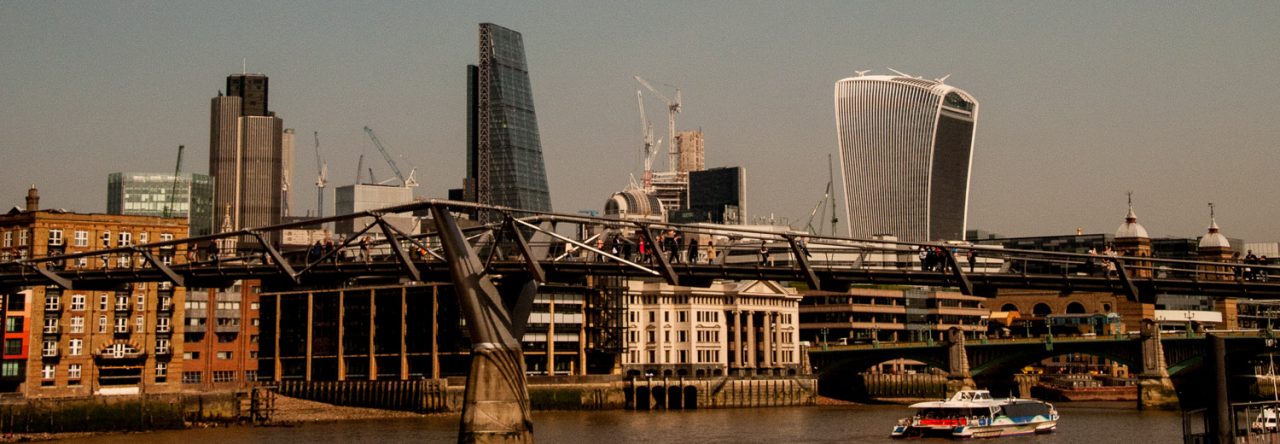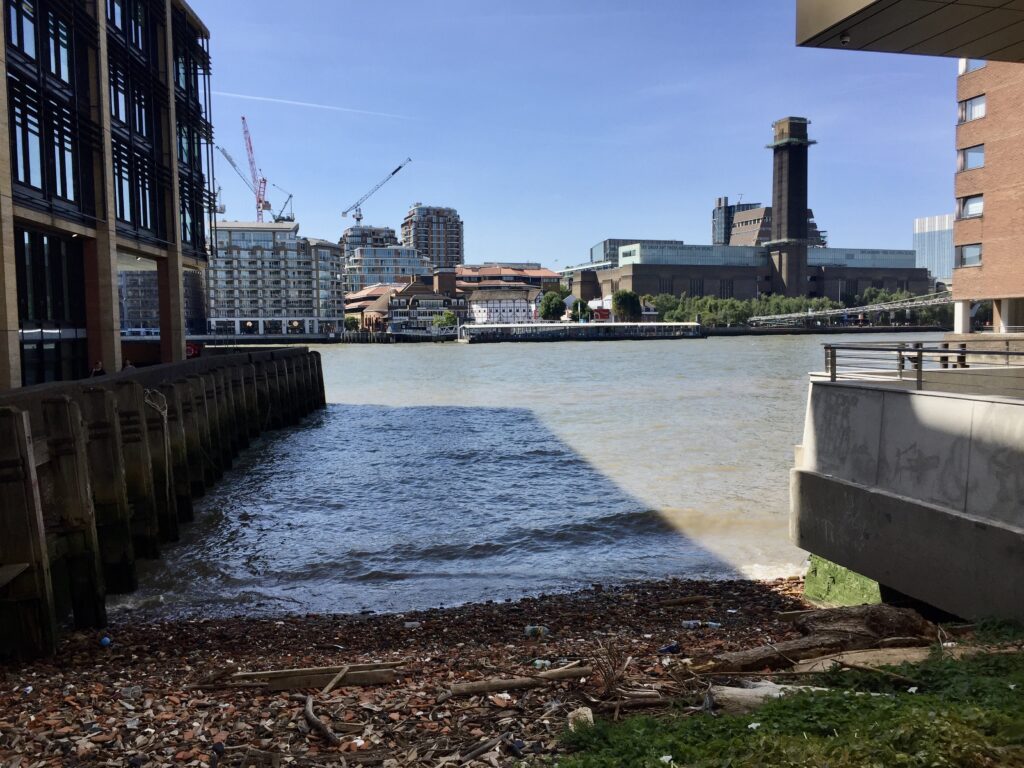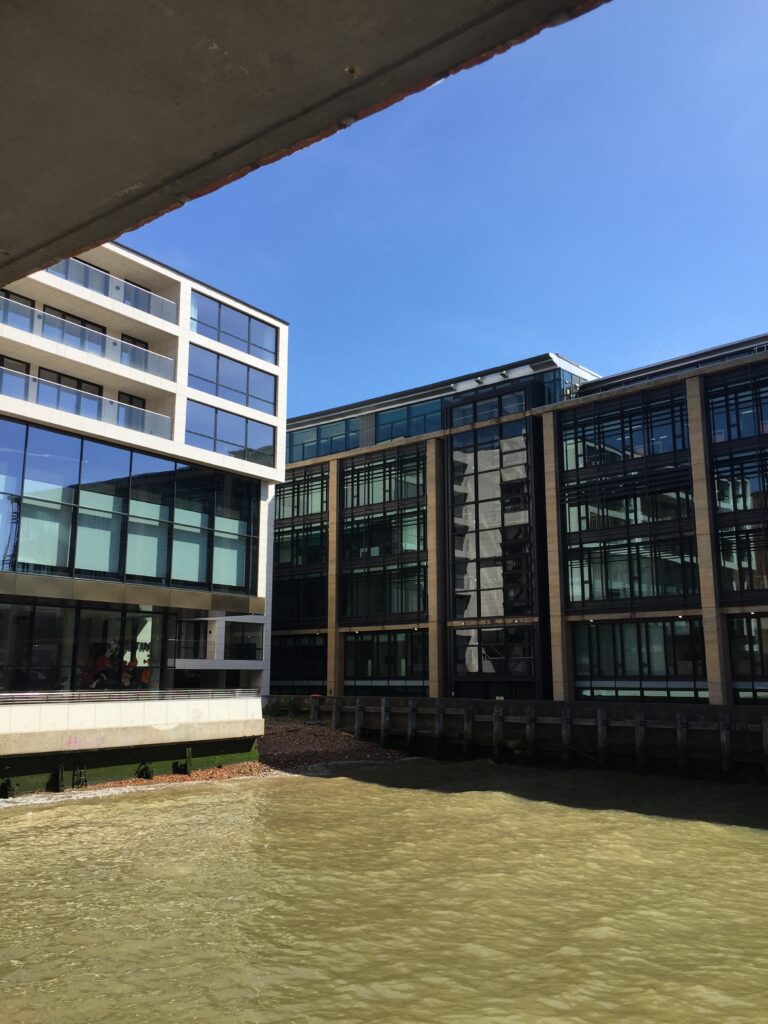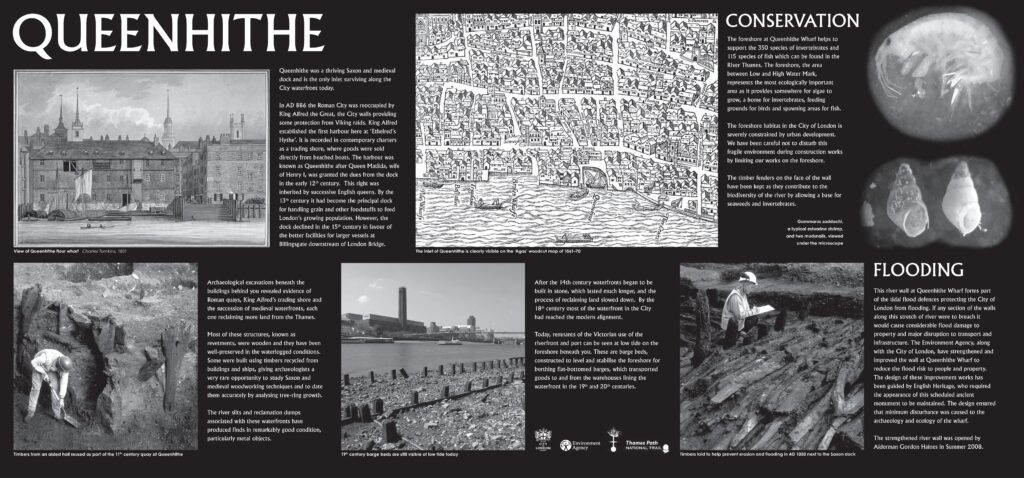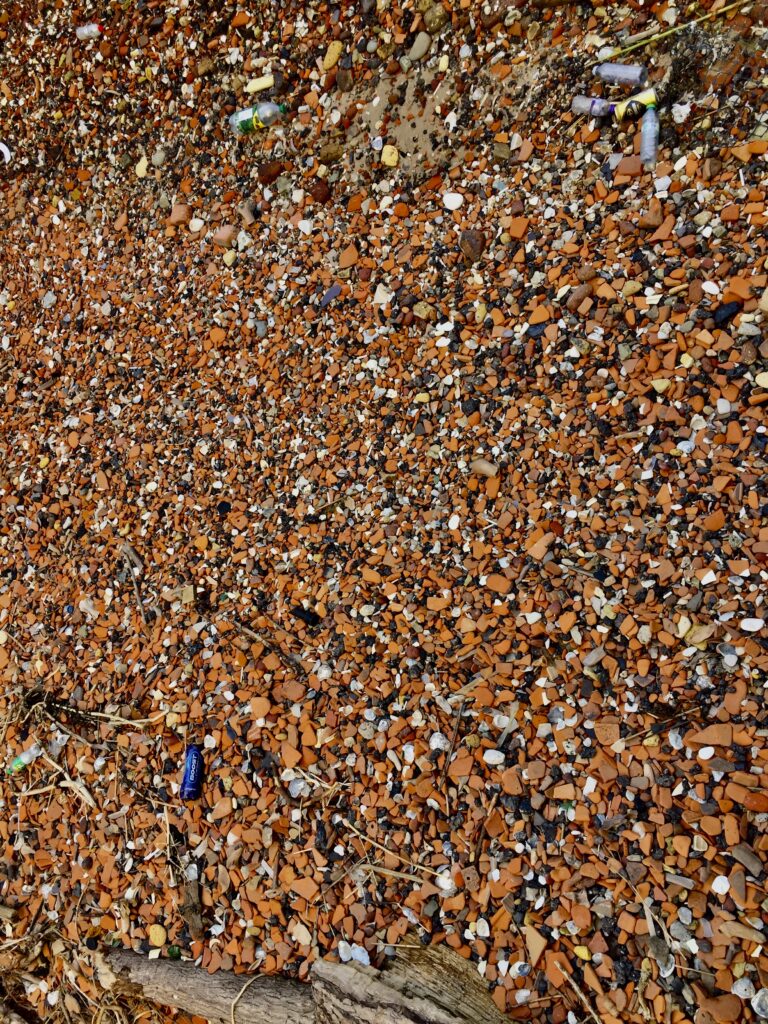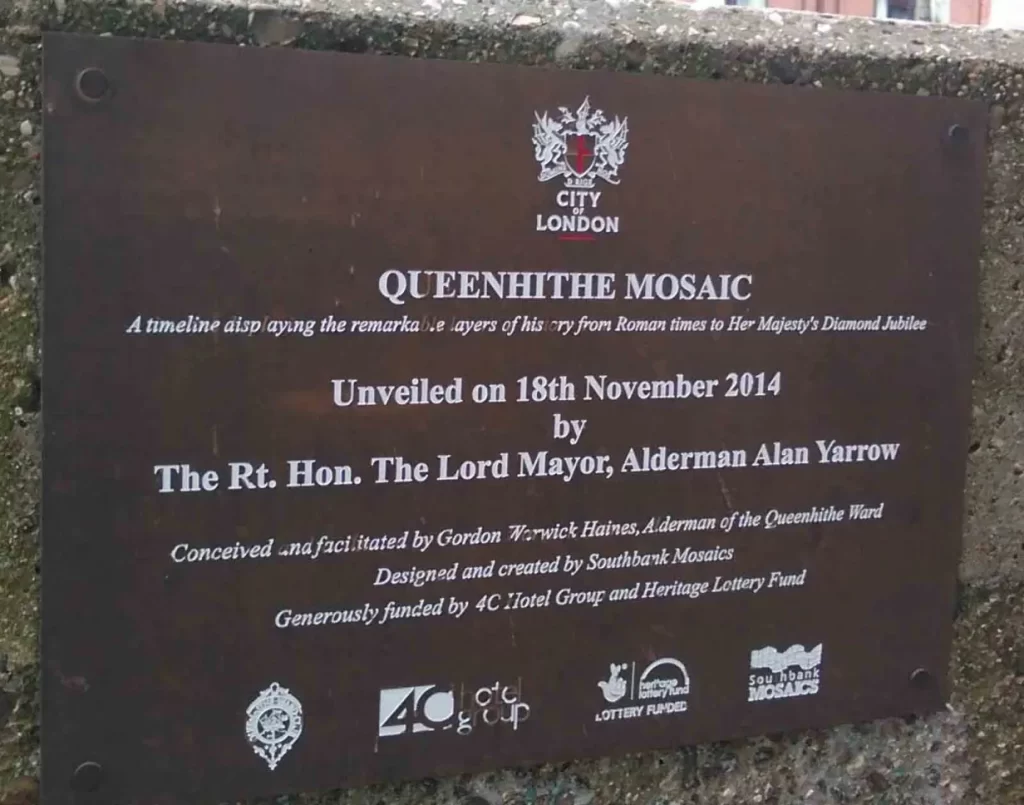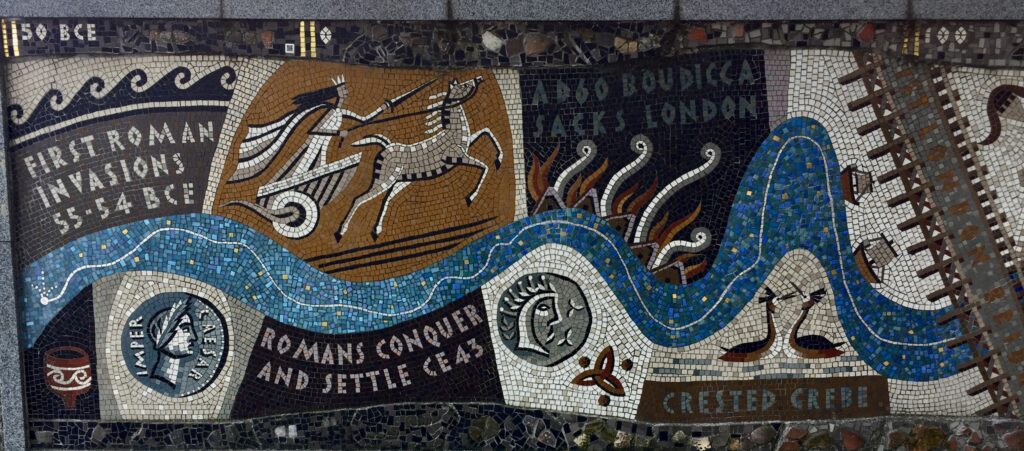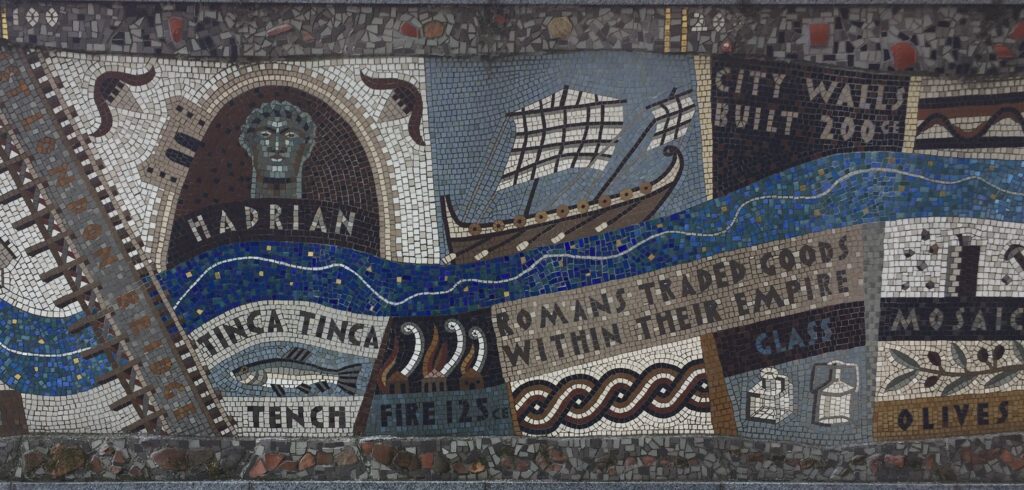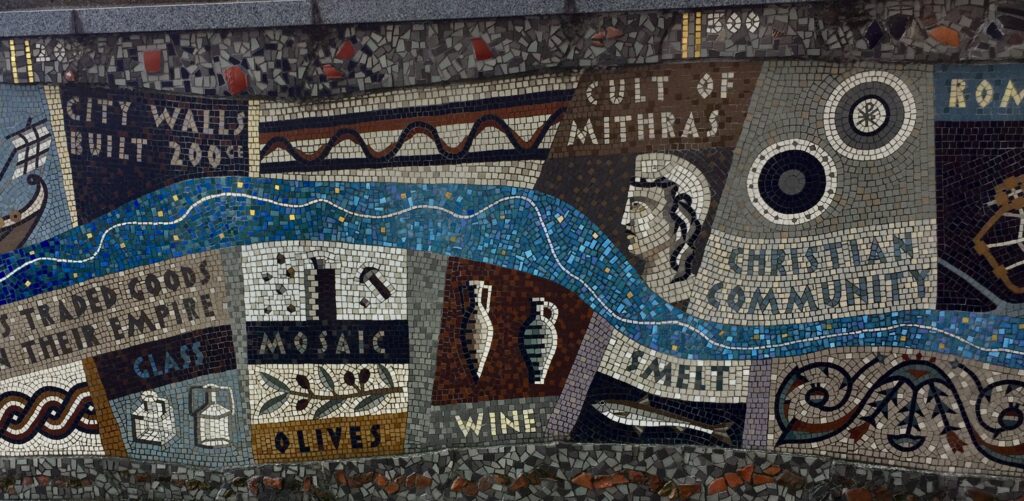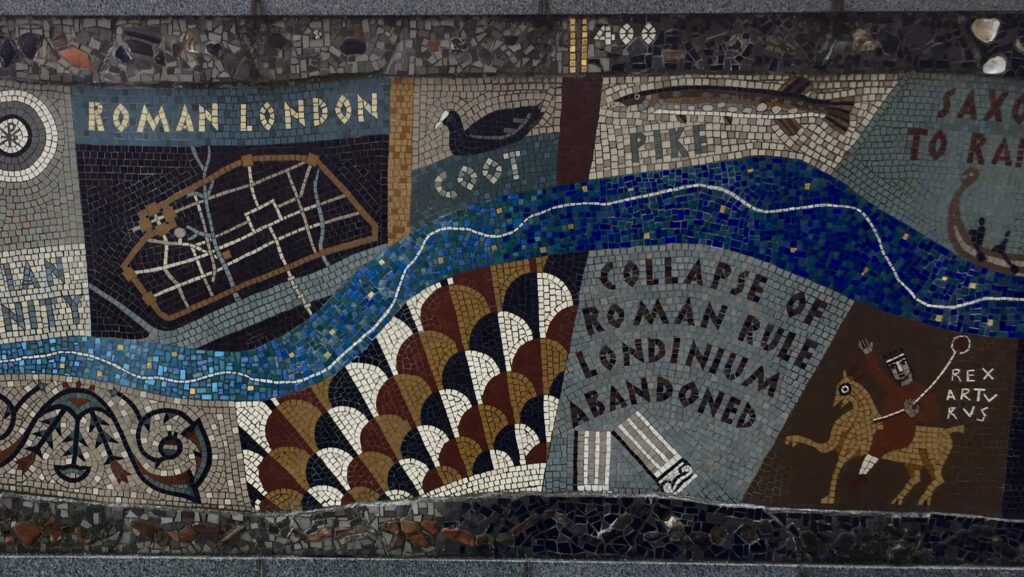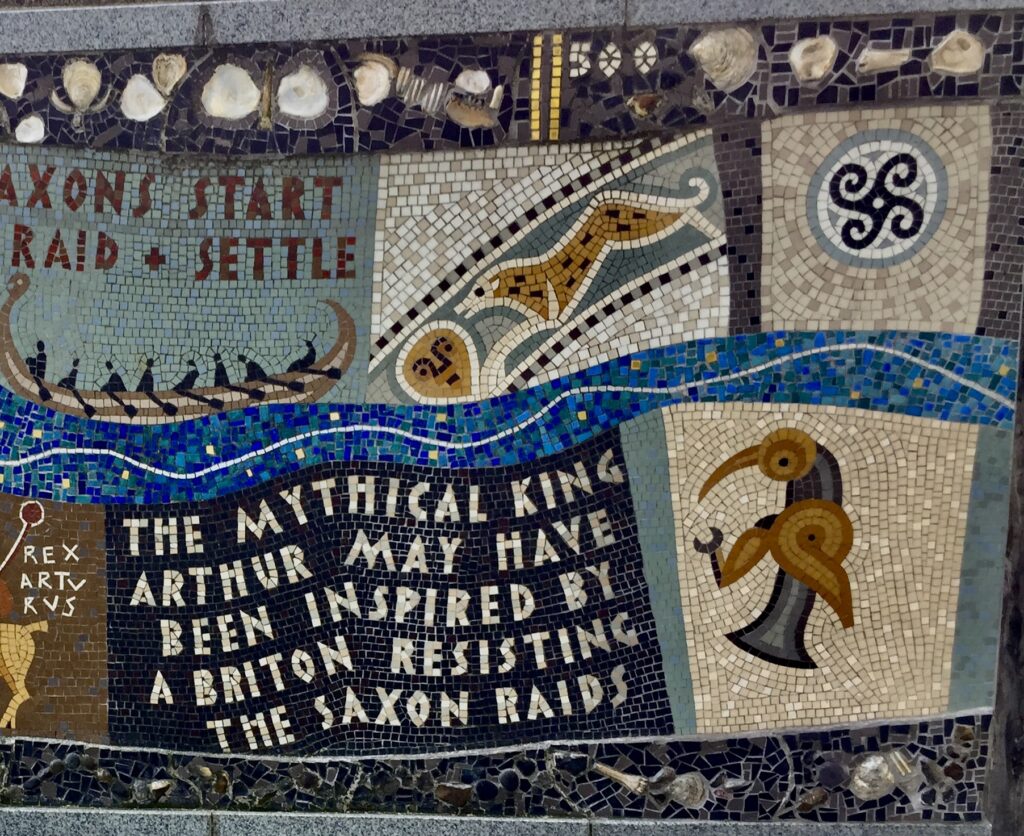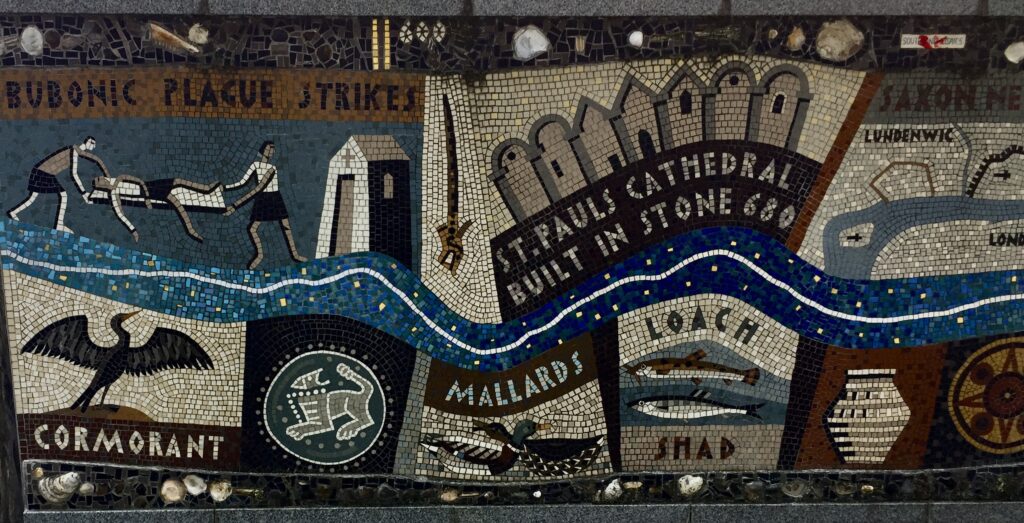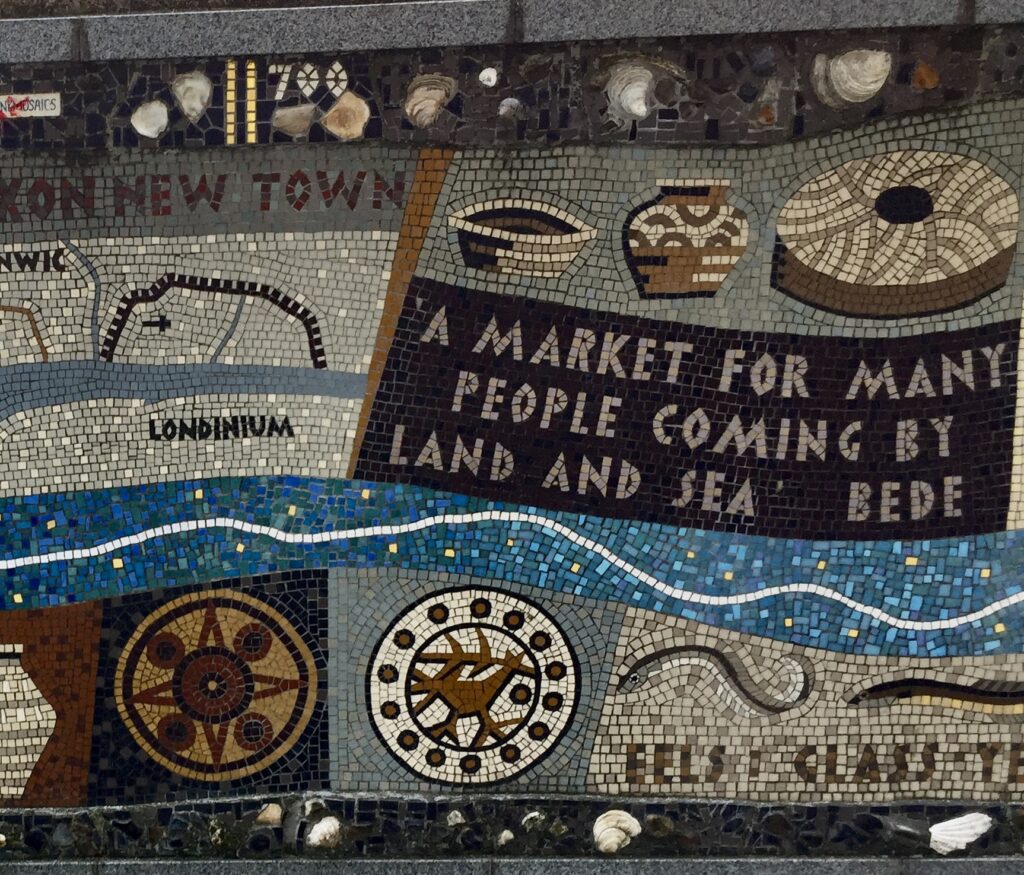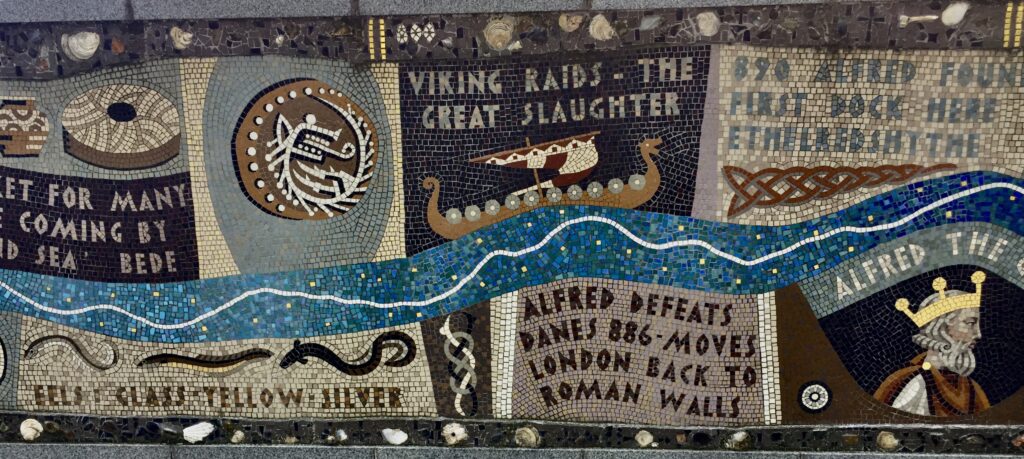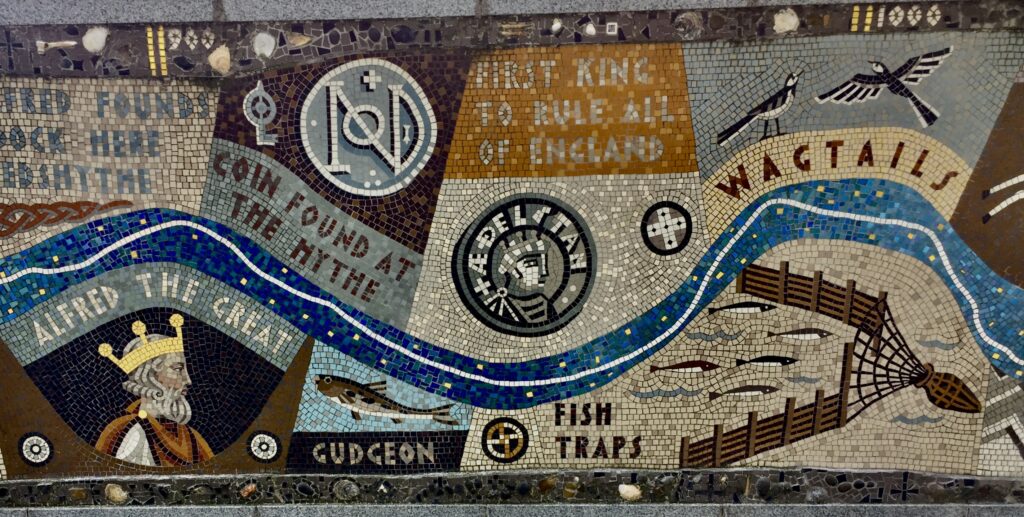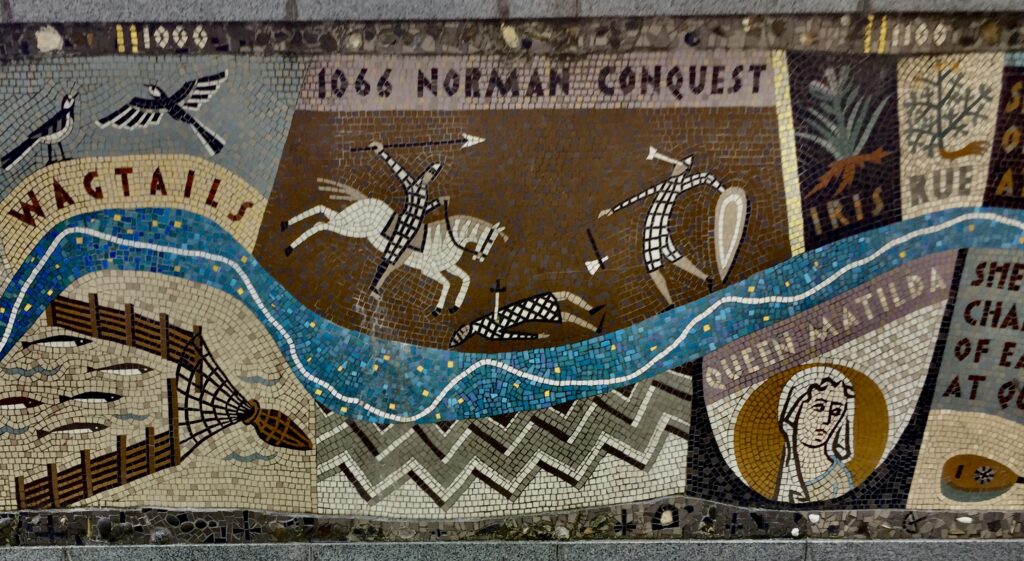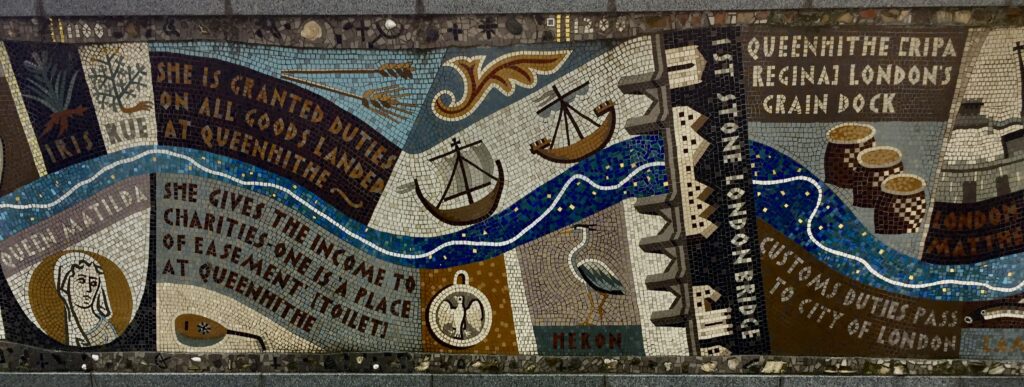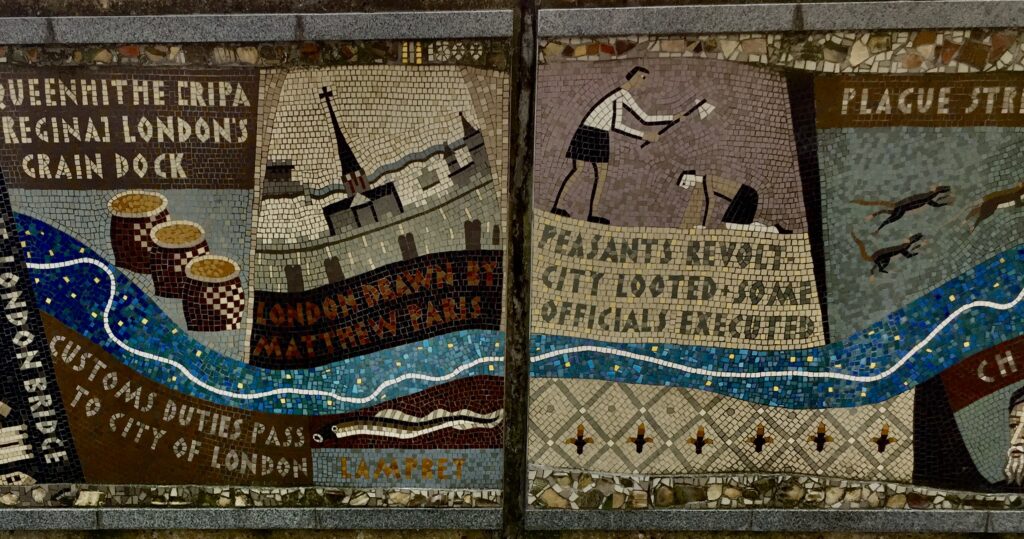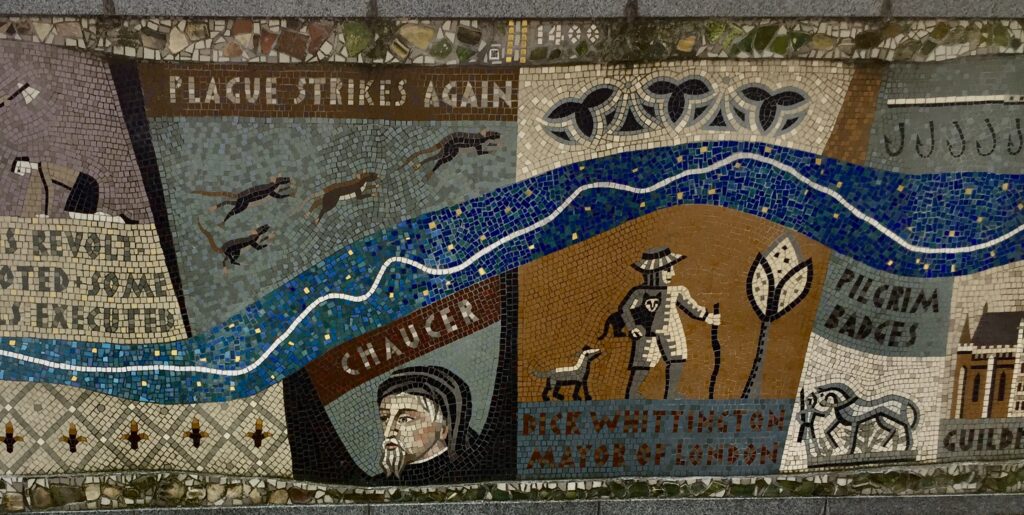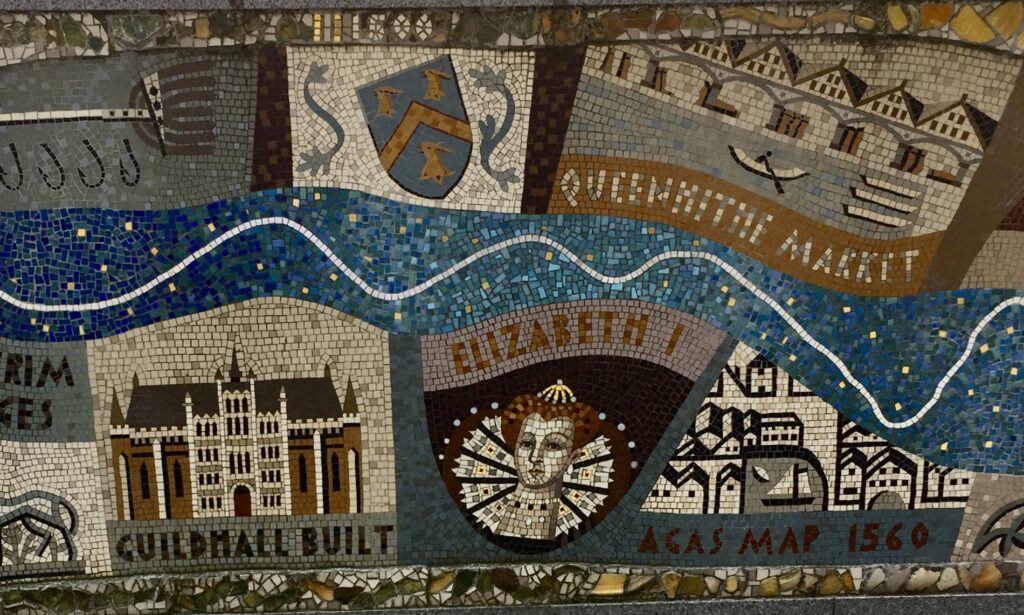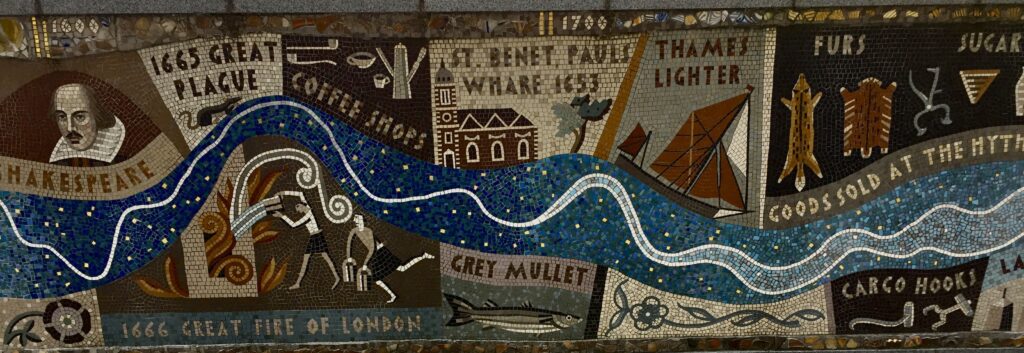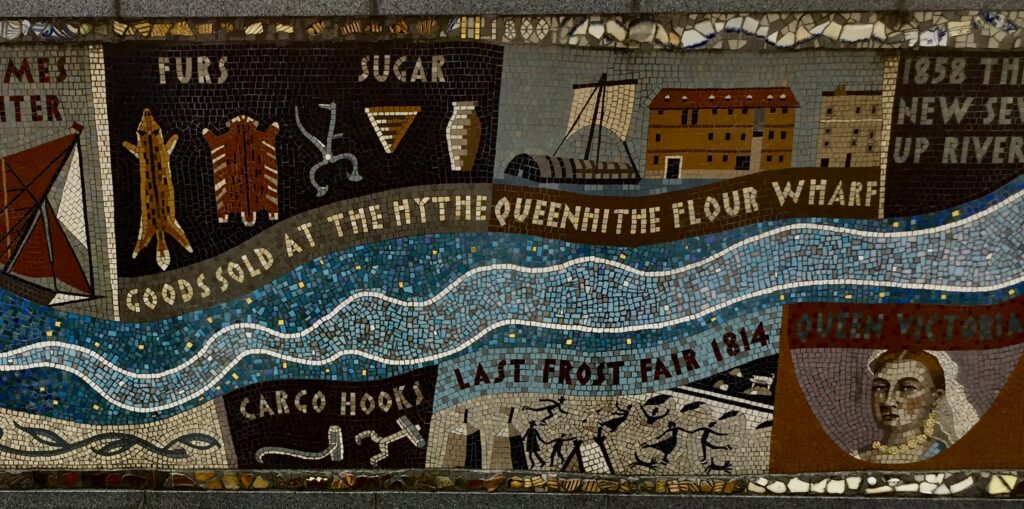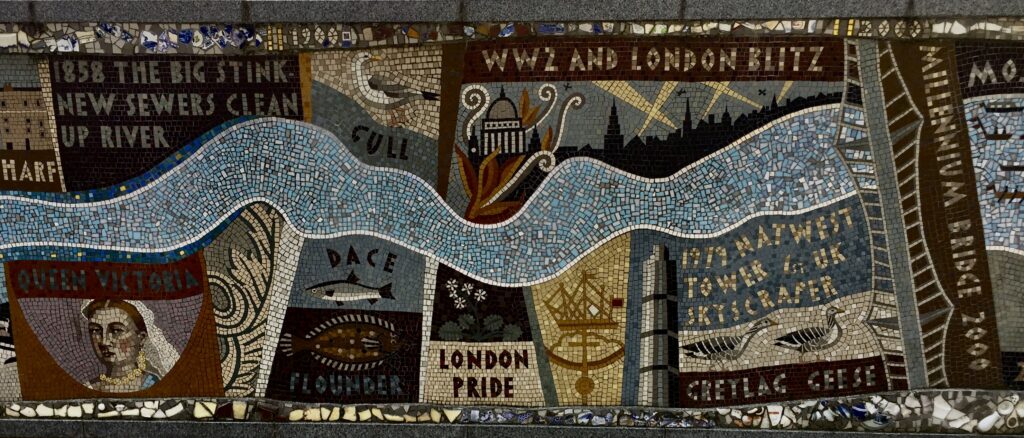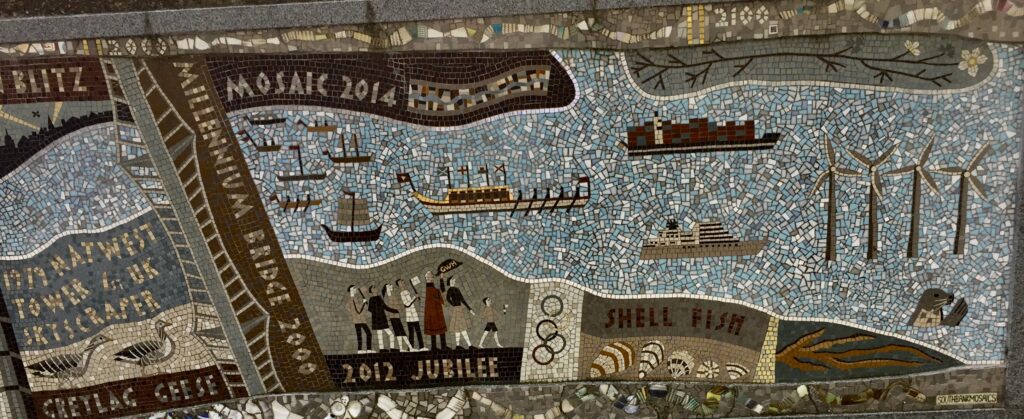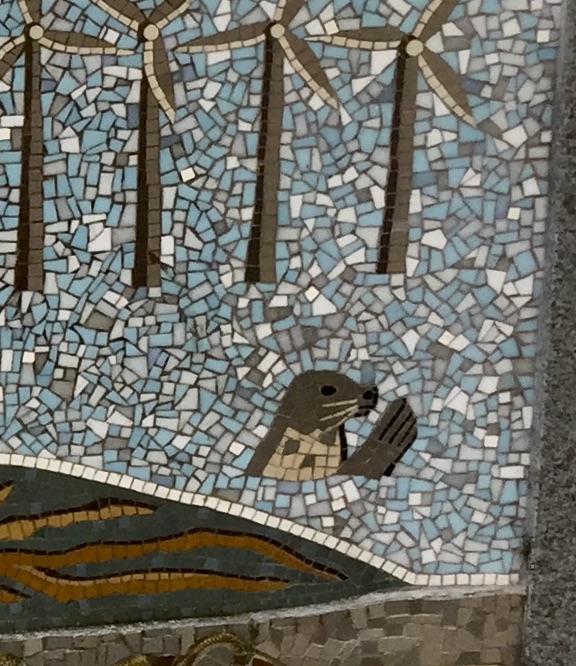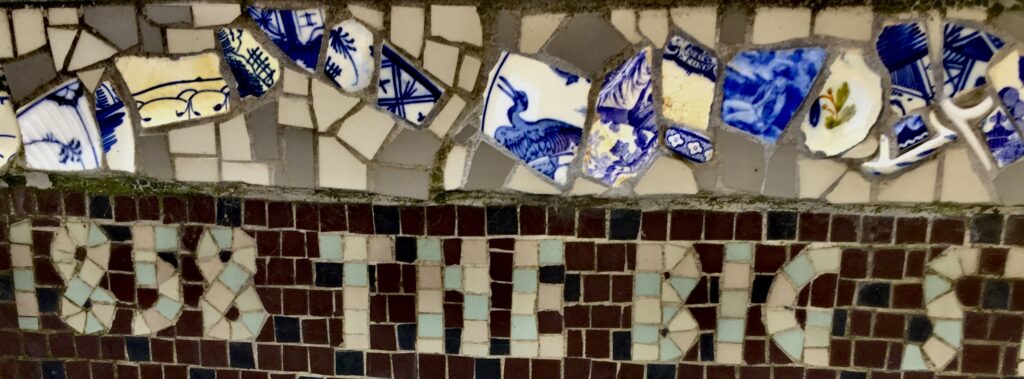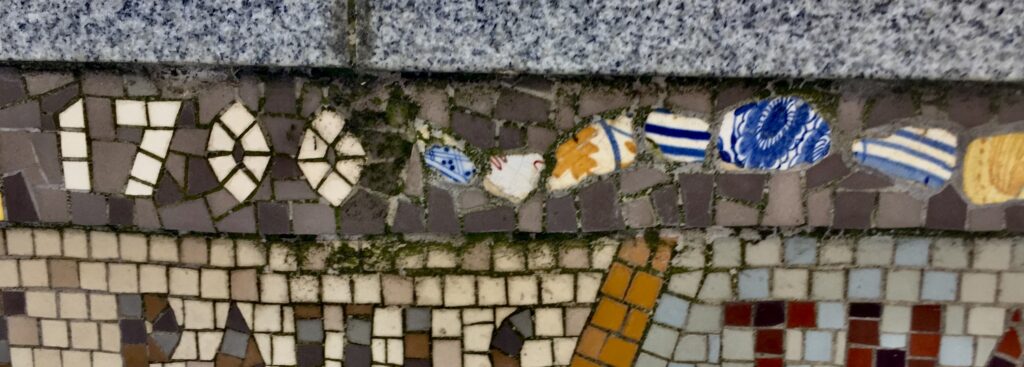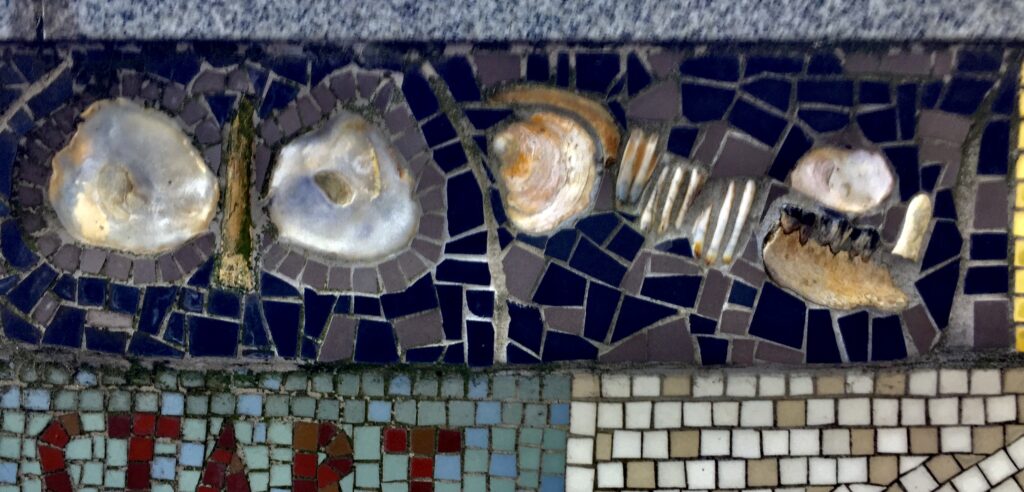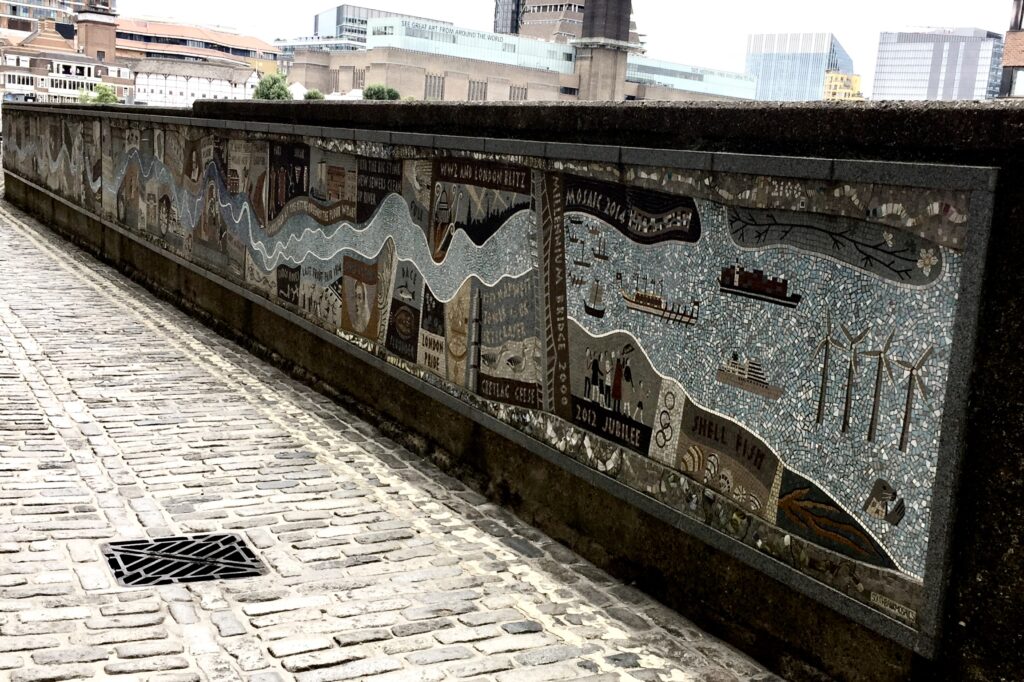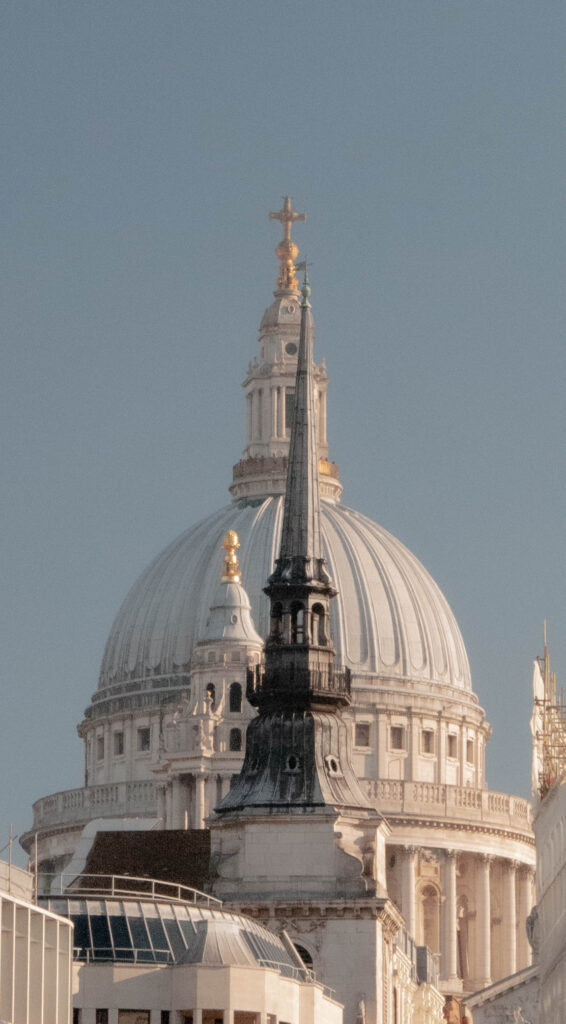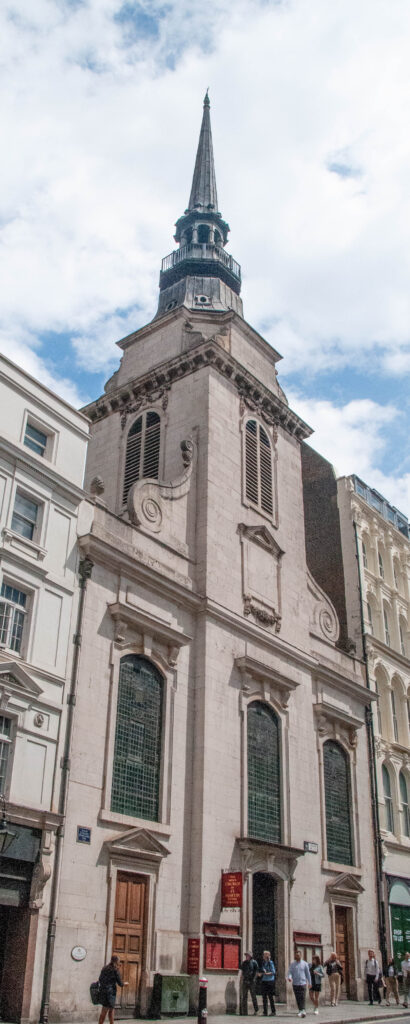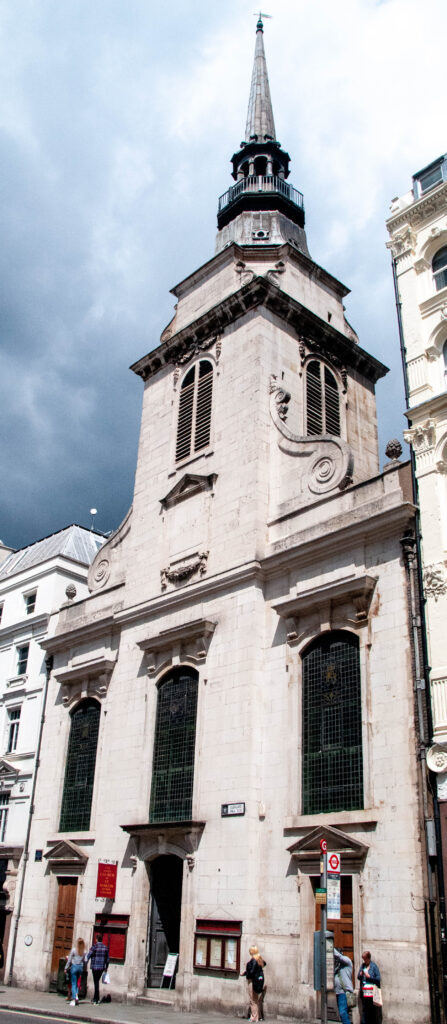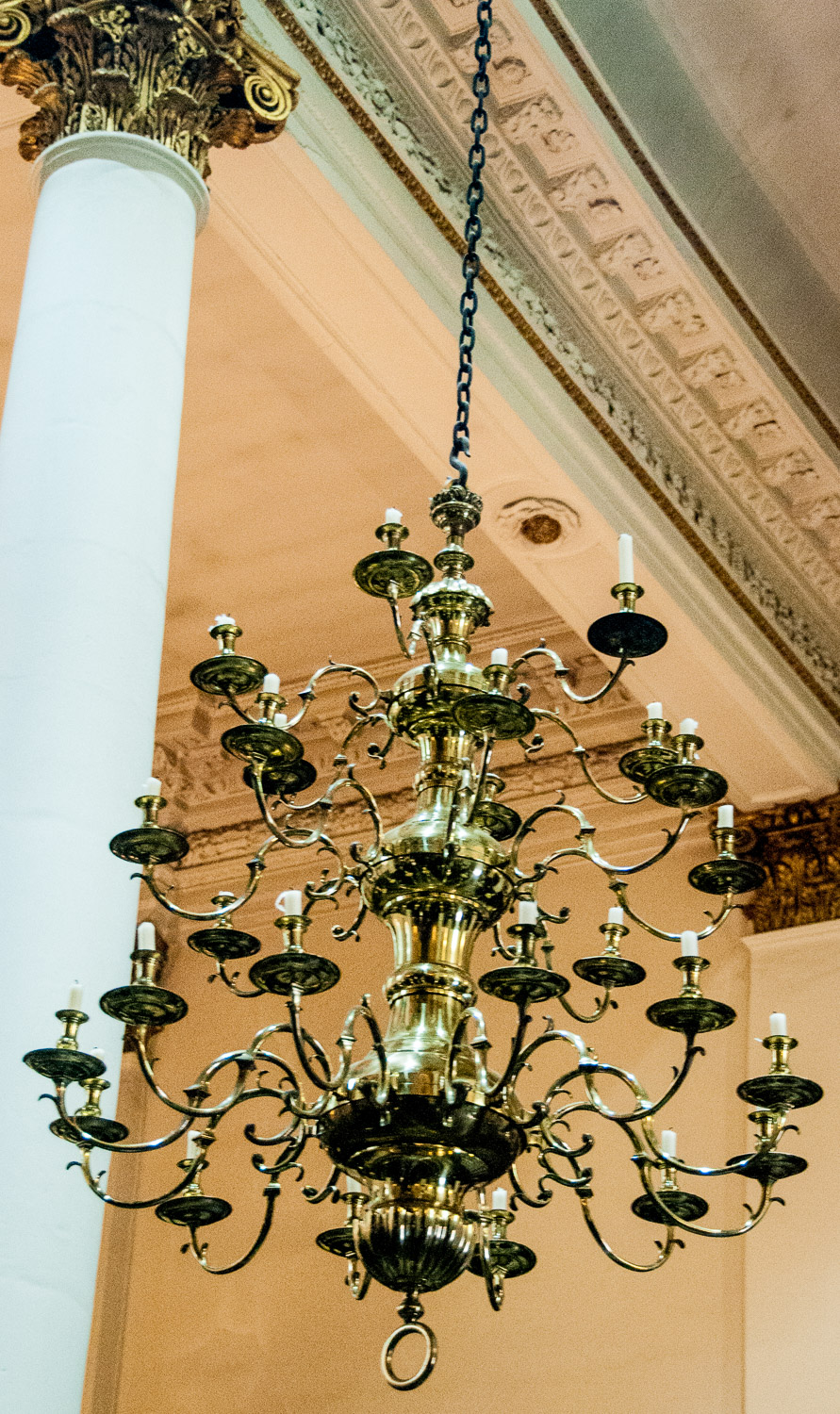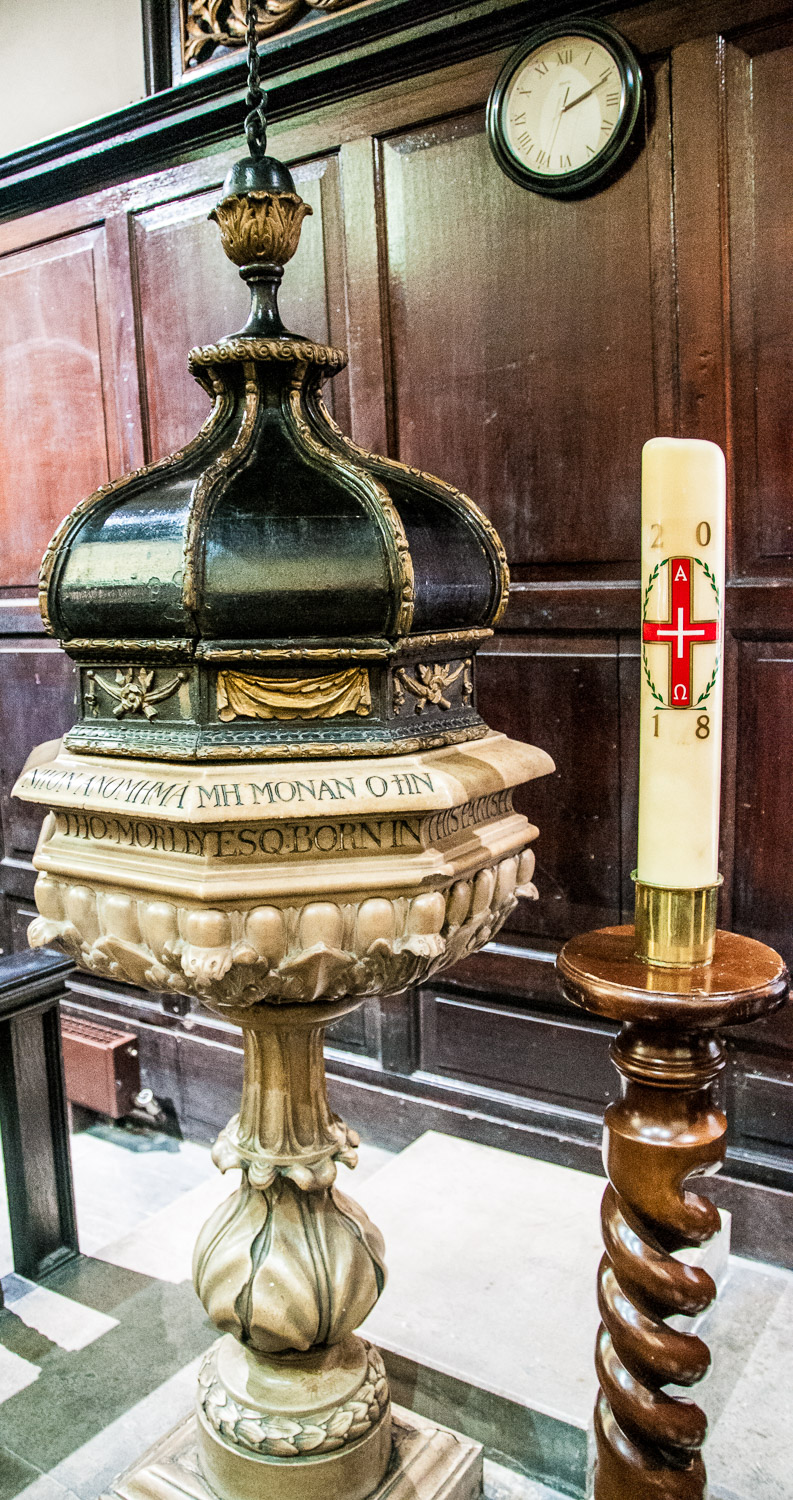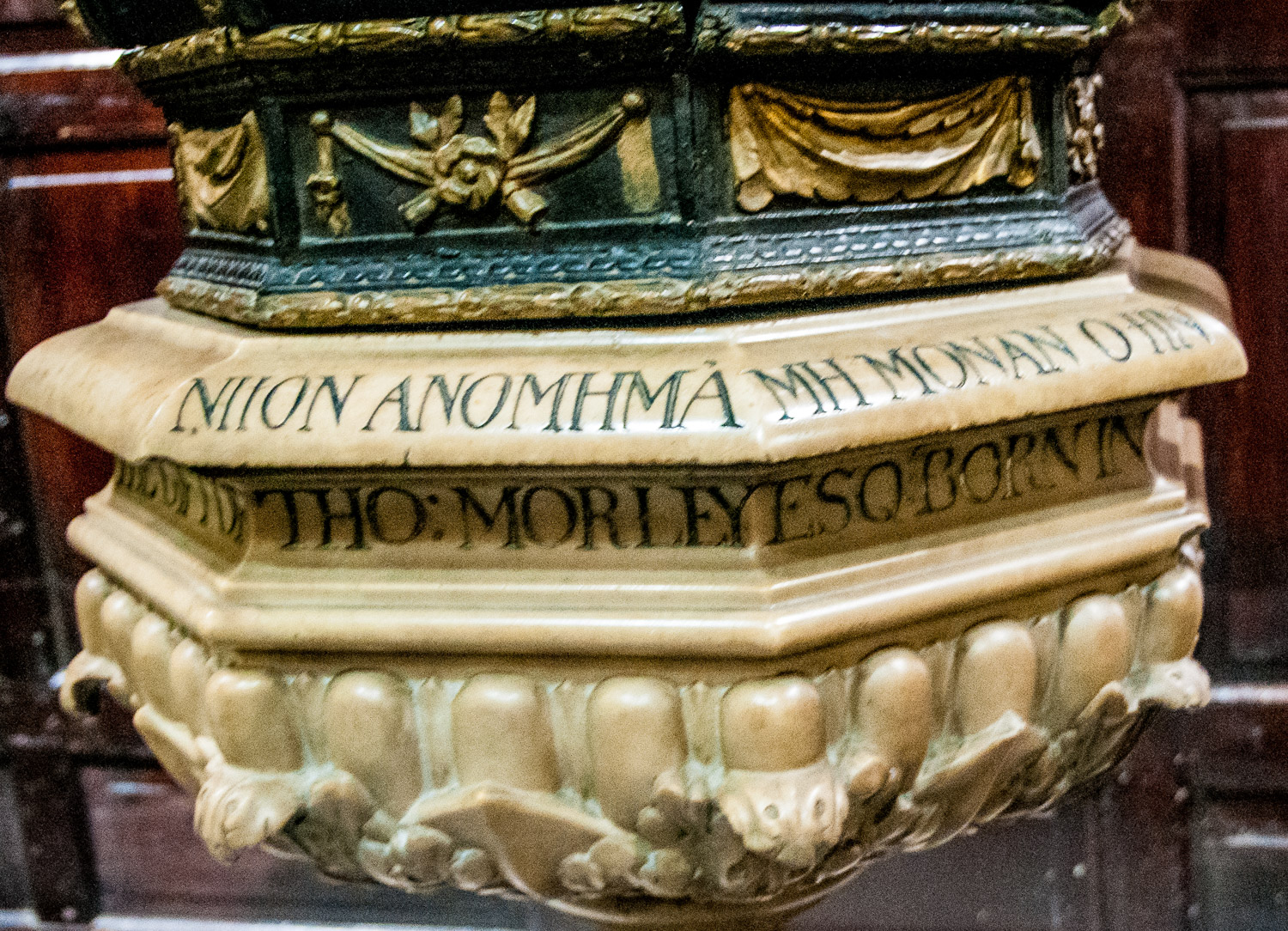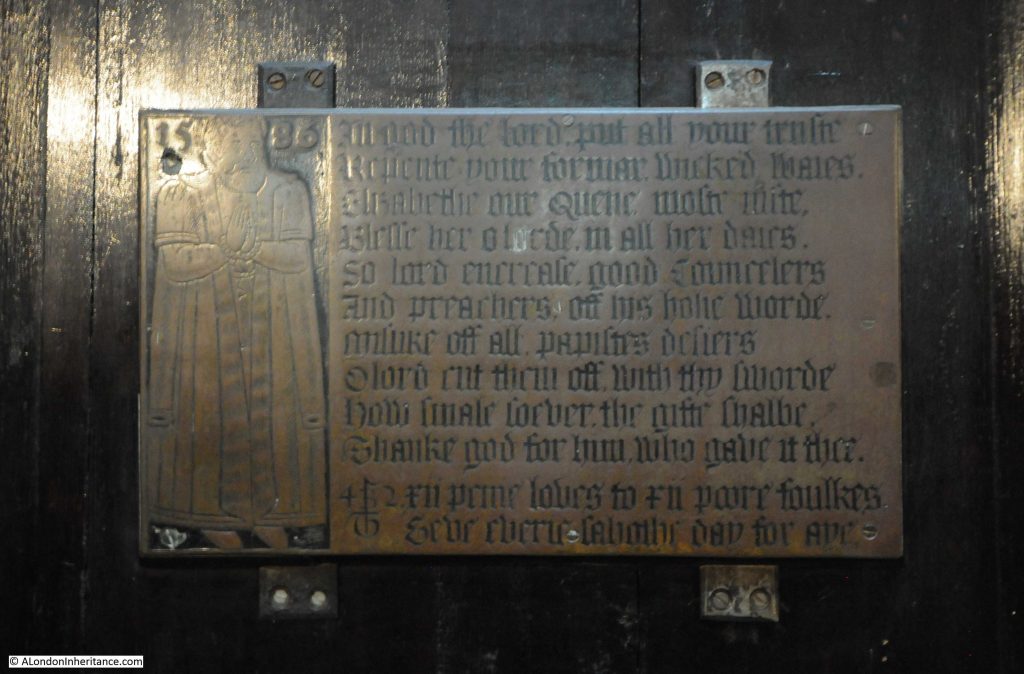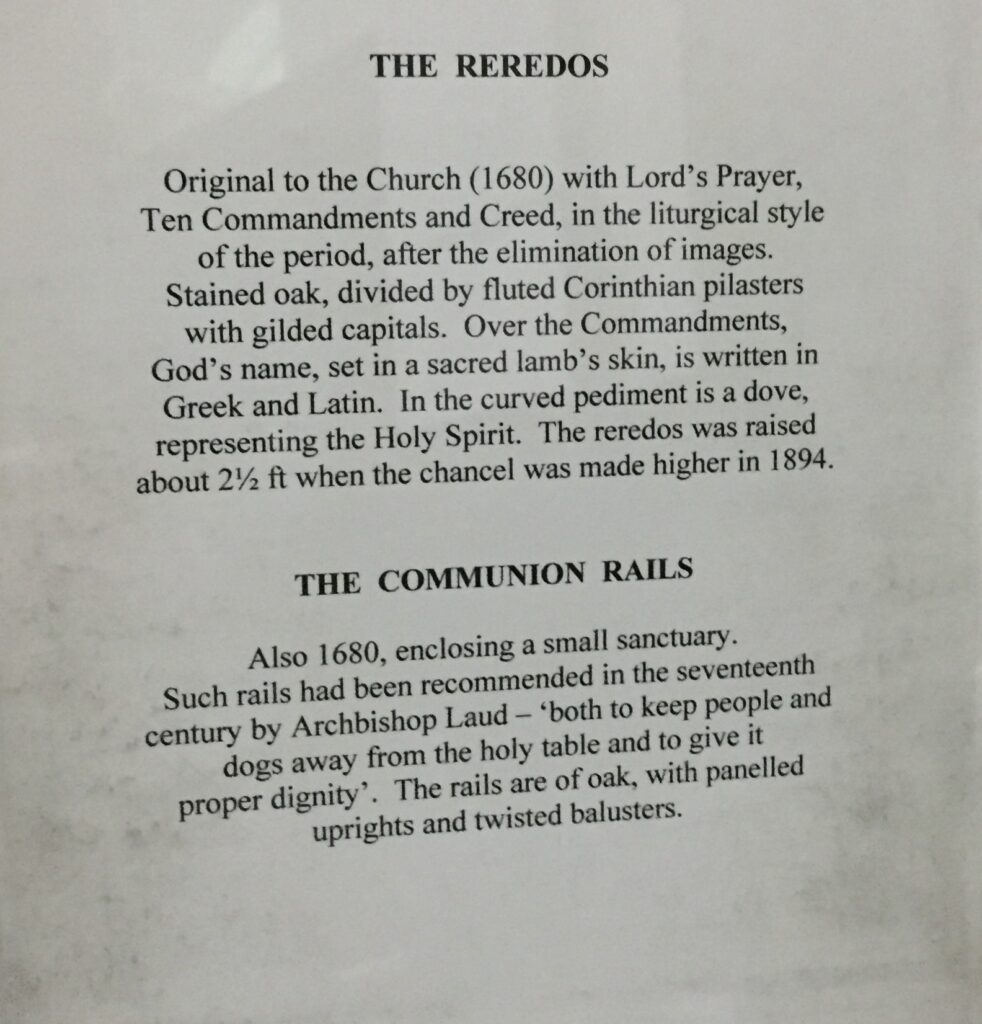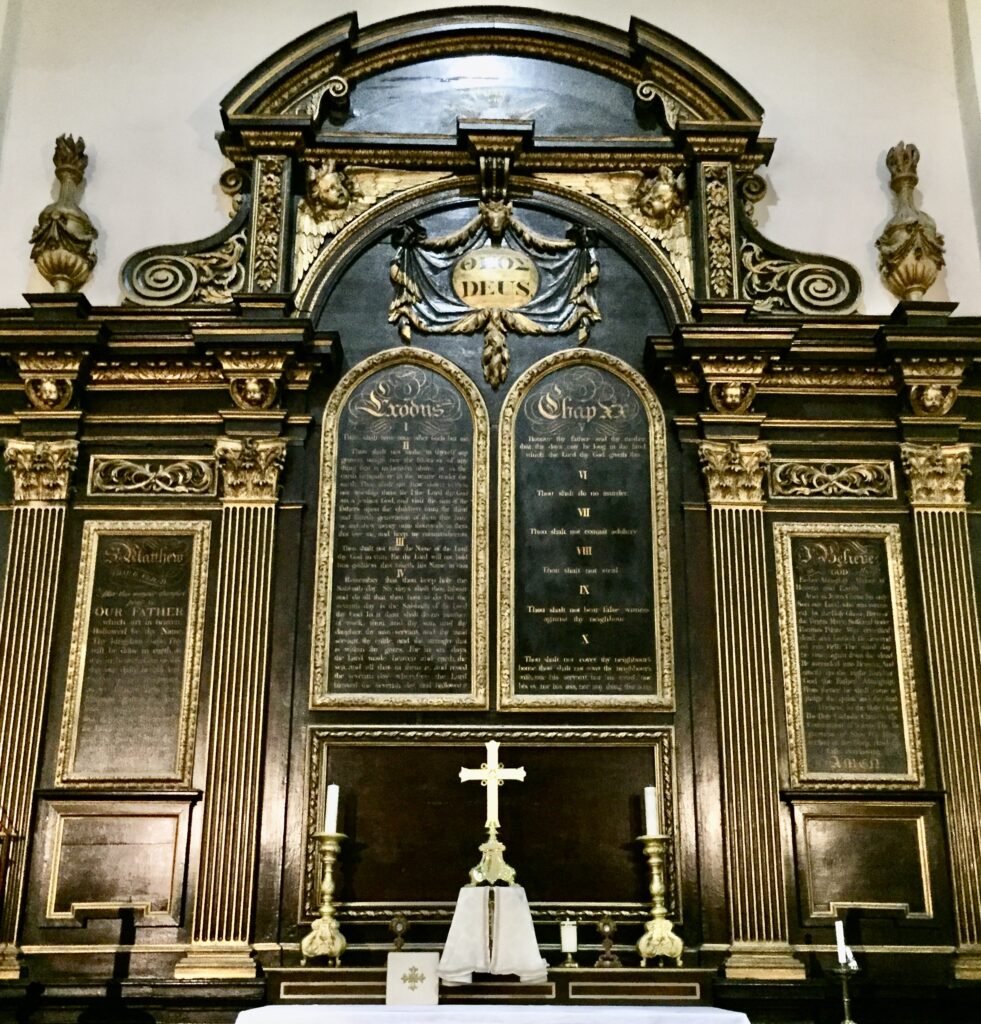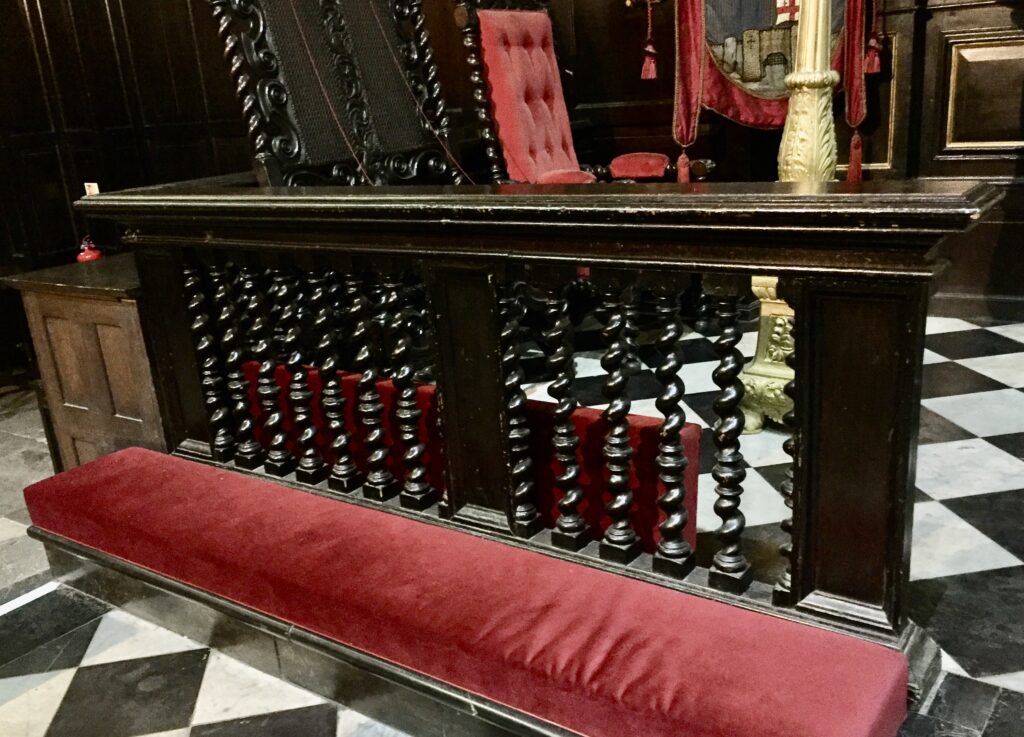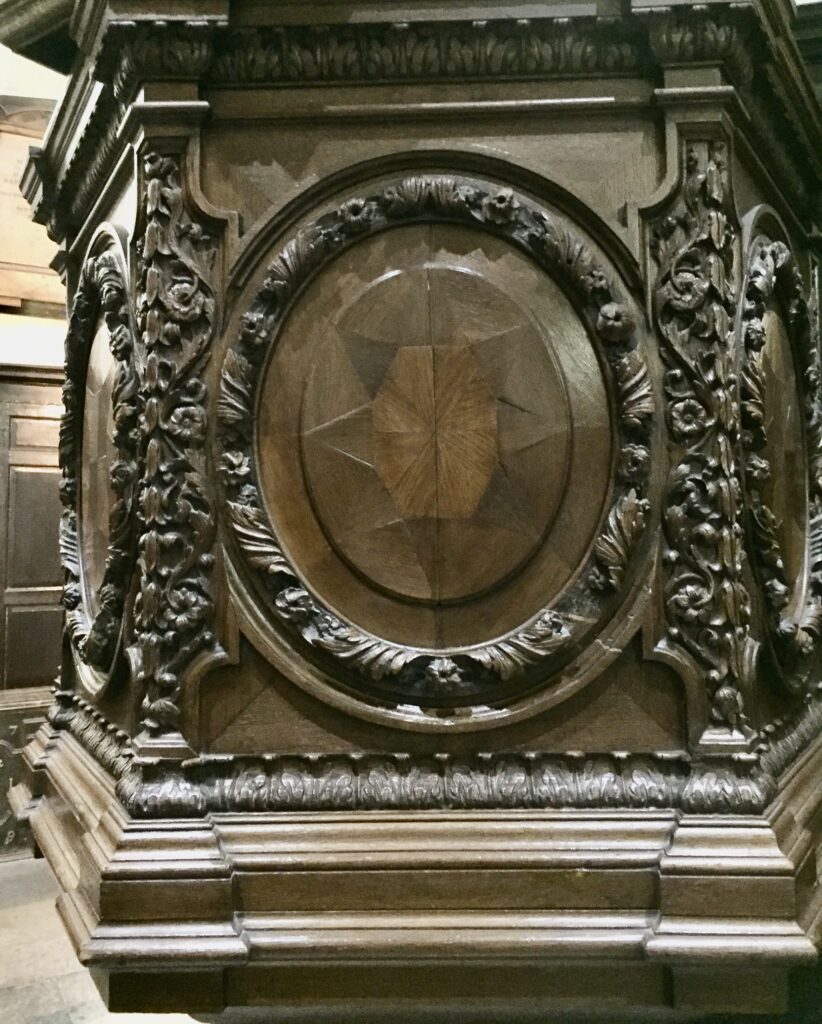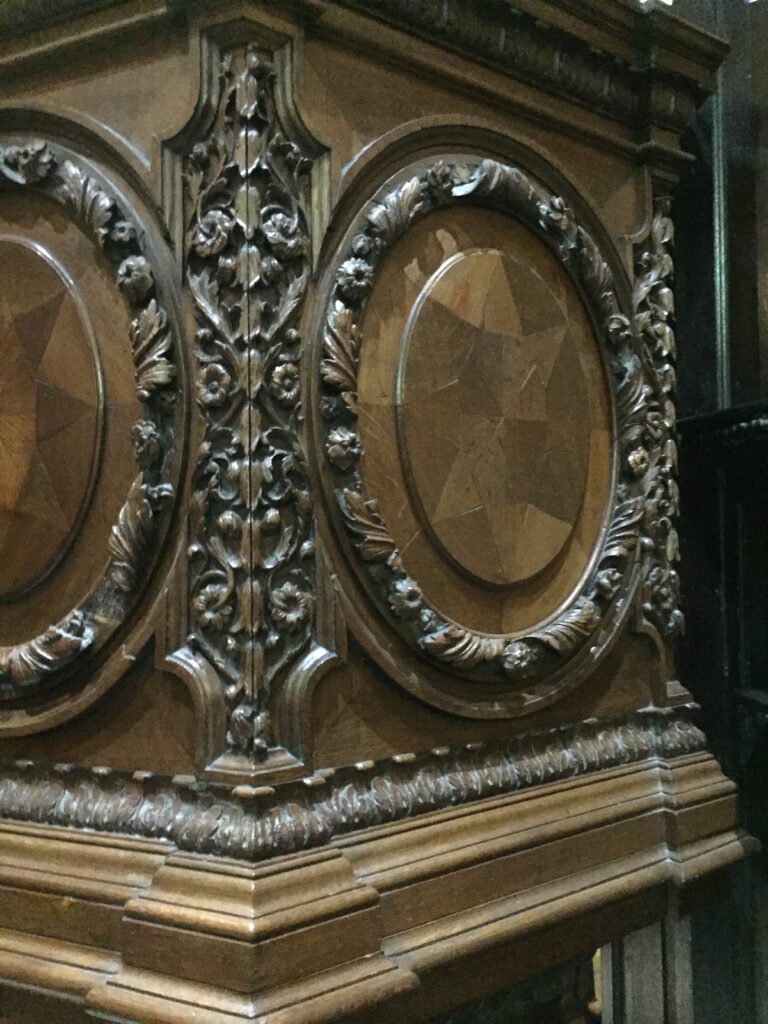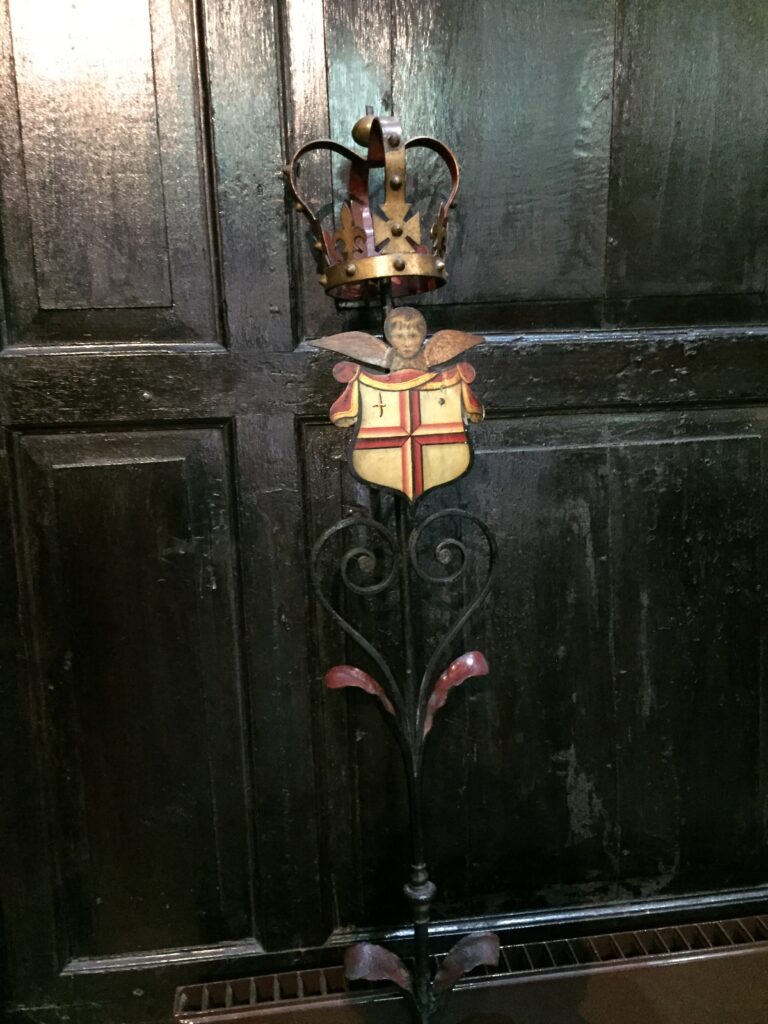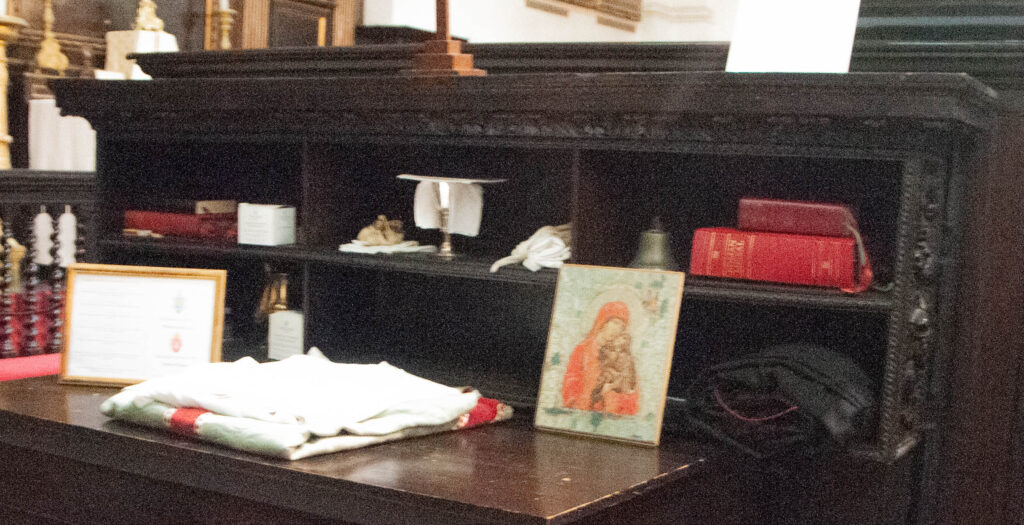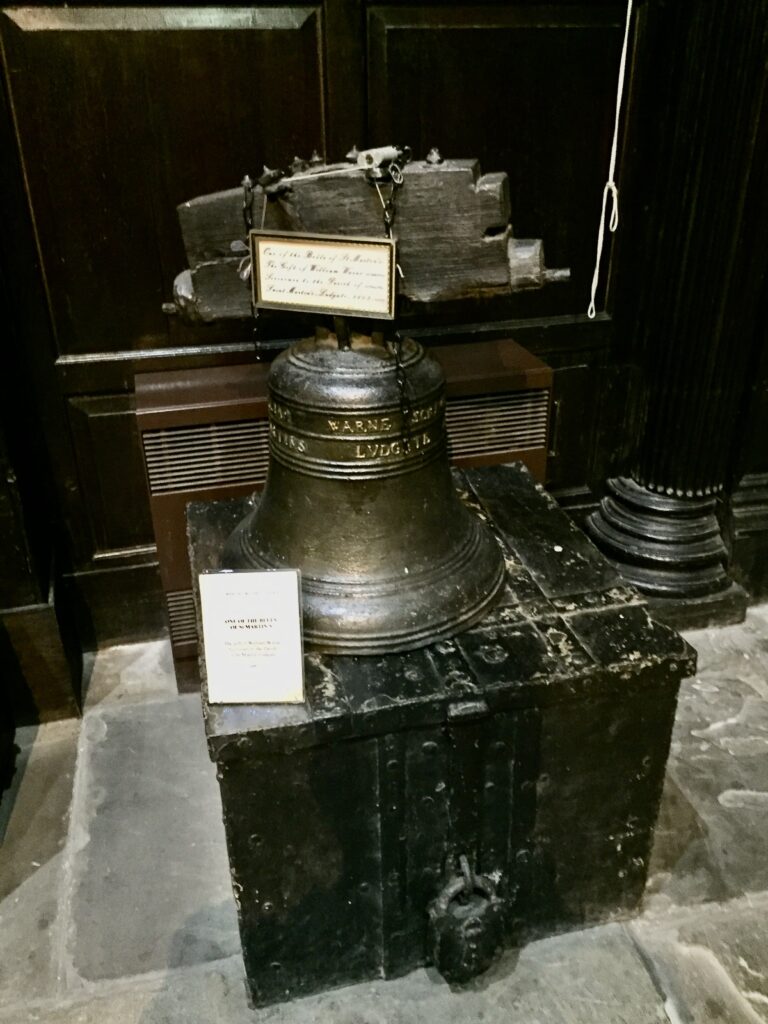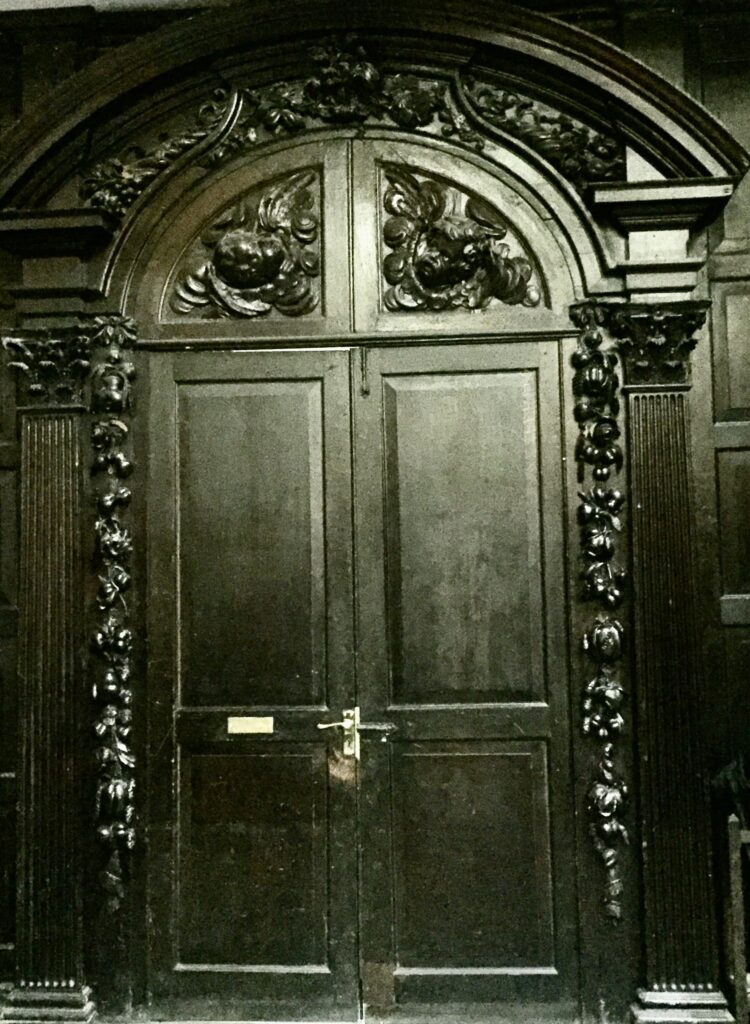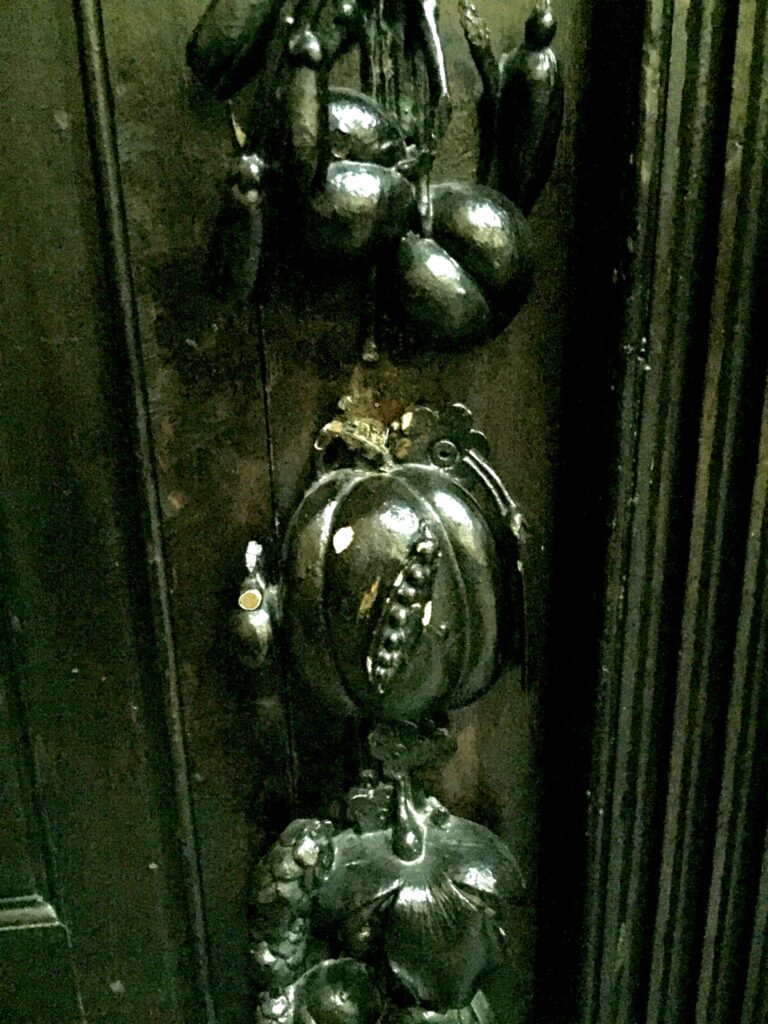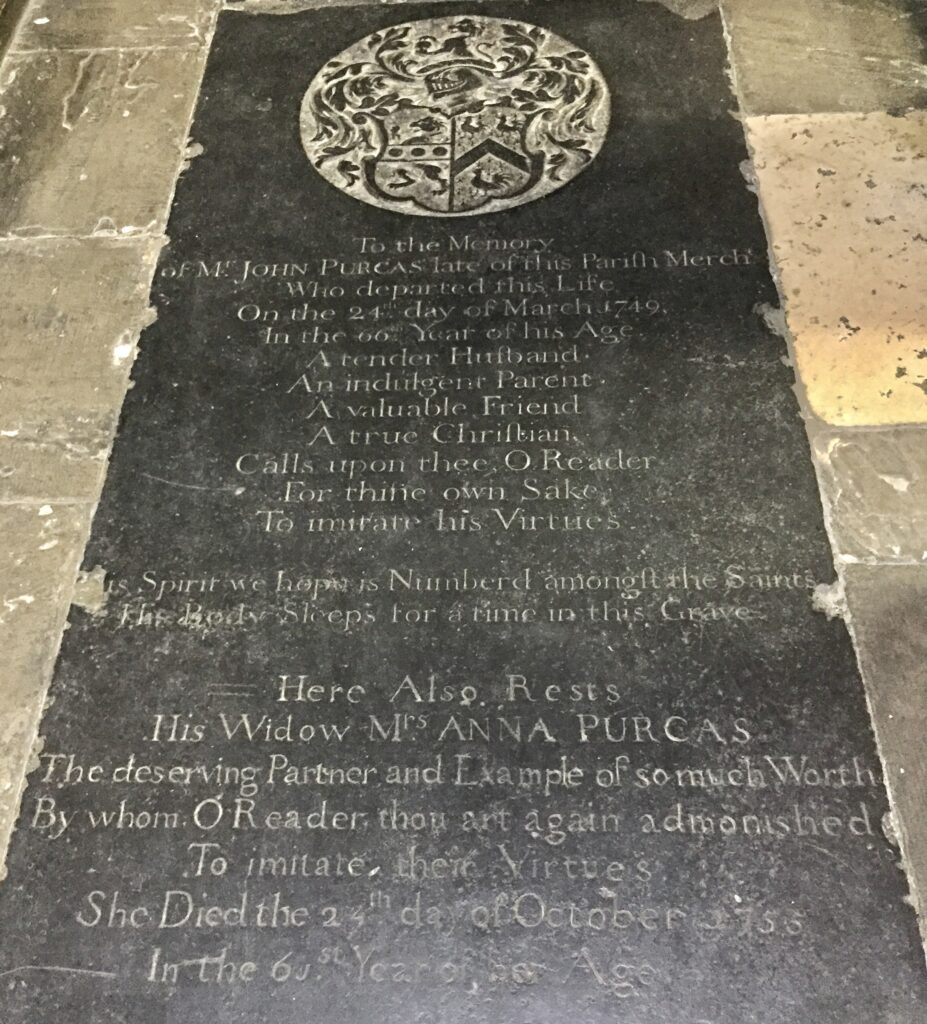I felt it was time for another wander around Smithfield.
The Founders Company is one of the 110 Livery Companies based in the City and was established in 1375. In its earliest form the Company was made up of craftspeople who specialised in brass and ‘latten’ (an alloy of copper and zinc resembling brass), including making ‘candlesticks, buckles, straps and other such like articles’. Membership is now much extended and even includes estate agents and wine merchants as well as bell founders. The Company motto is God, the only Founder...
Their hall is located in Cloth Fair with an entrance in Bartholomew Passage …
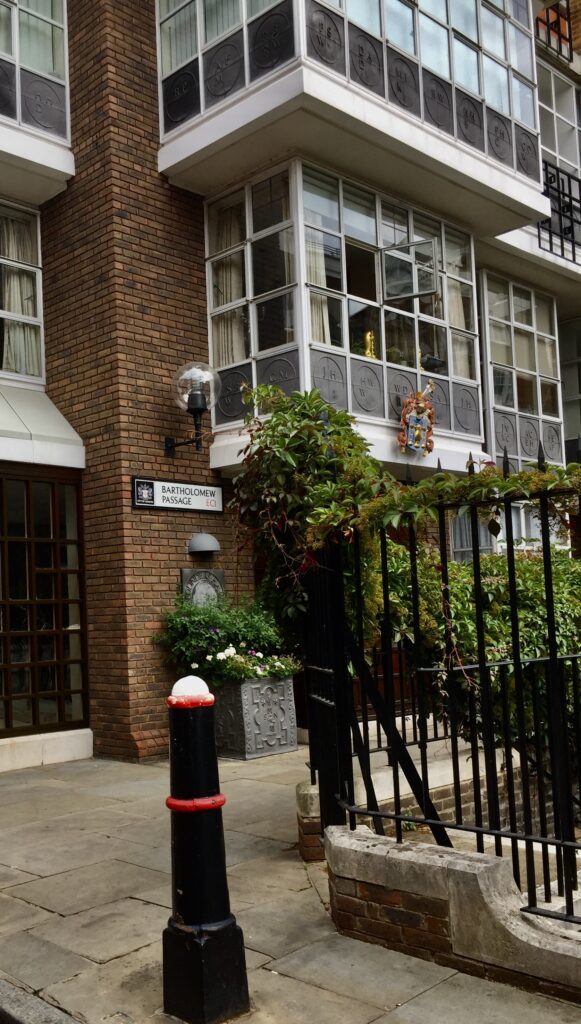
The planters outside are dated 1767 and contain what looks like a parish boundary mark. If they really are that old they are in remarkably good condition …
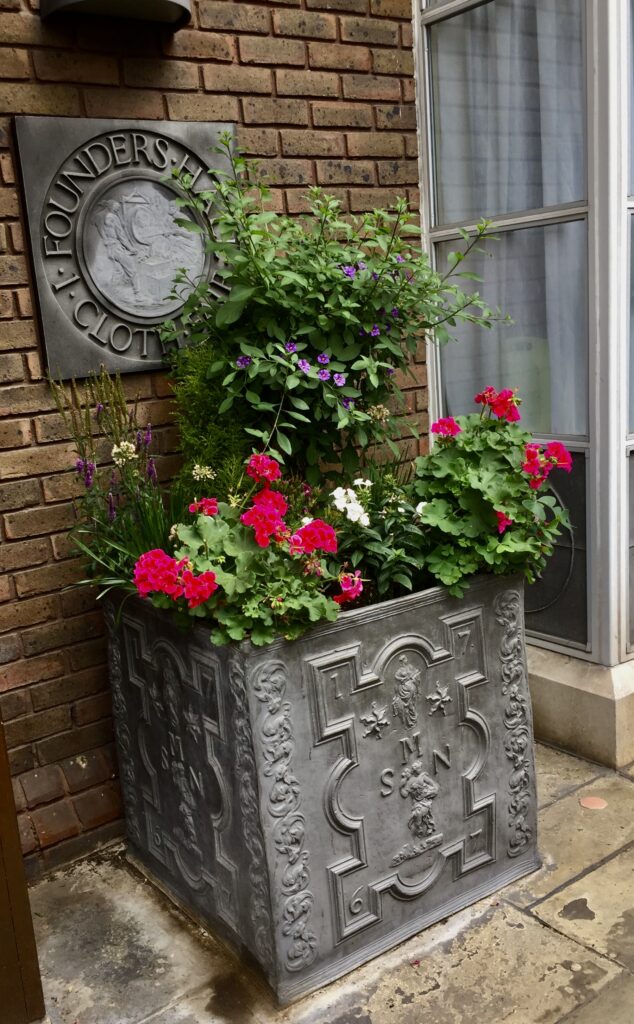
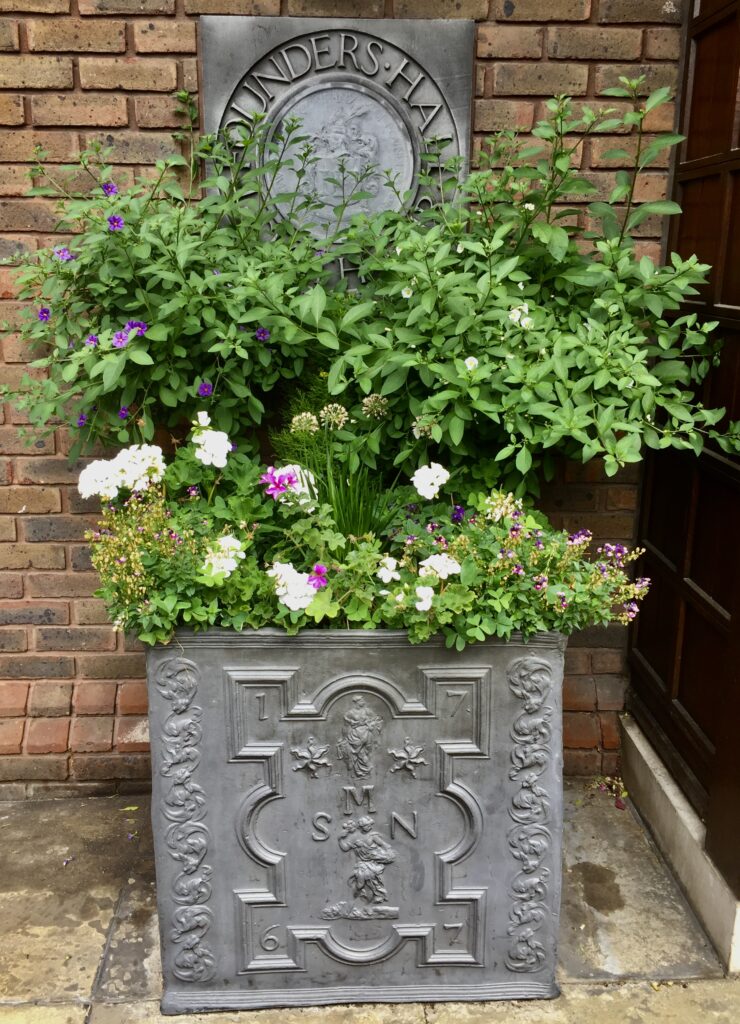
The coat of arms – a ewer or laver-pot and a pair of taper-candlesticks …
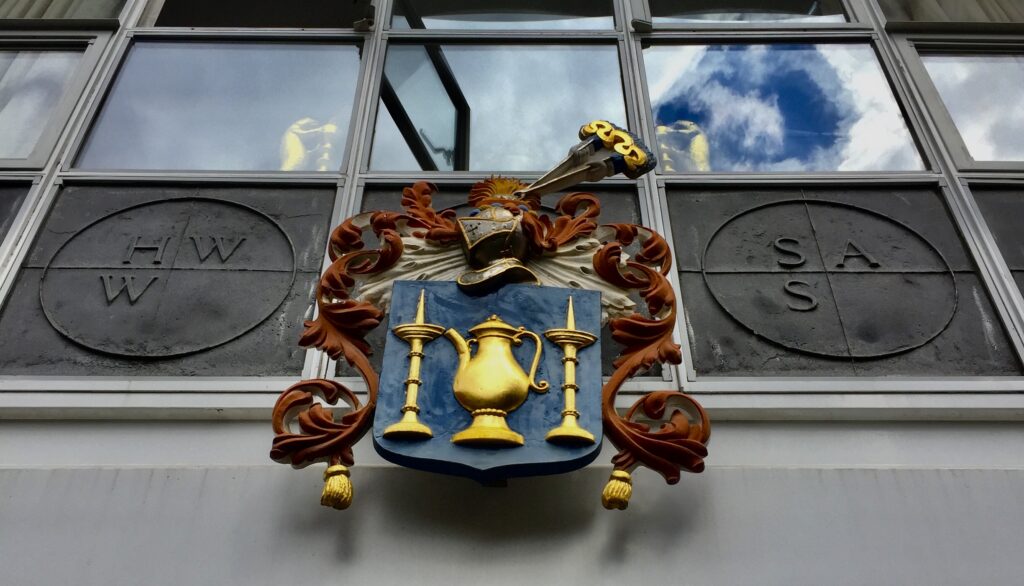
Just up the road in Cloth Street is the Farmers Hall which they share with the Fletchers (who made arrows). I do like the Farmers’ coat of arms and motto …
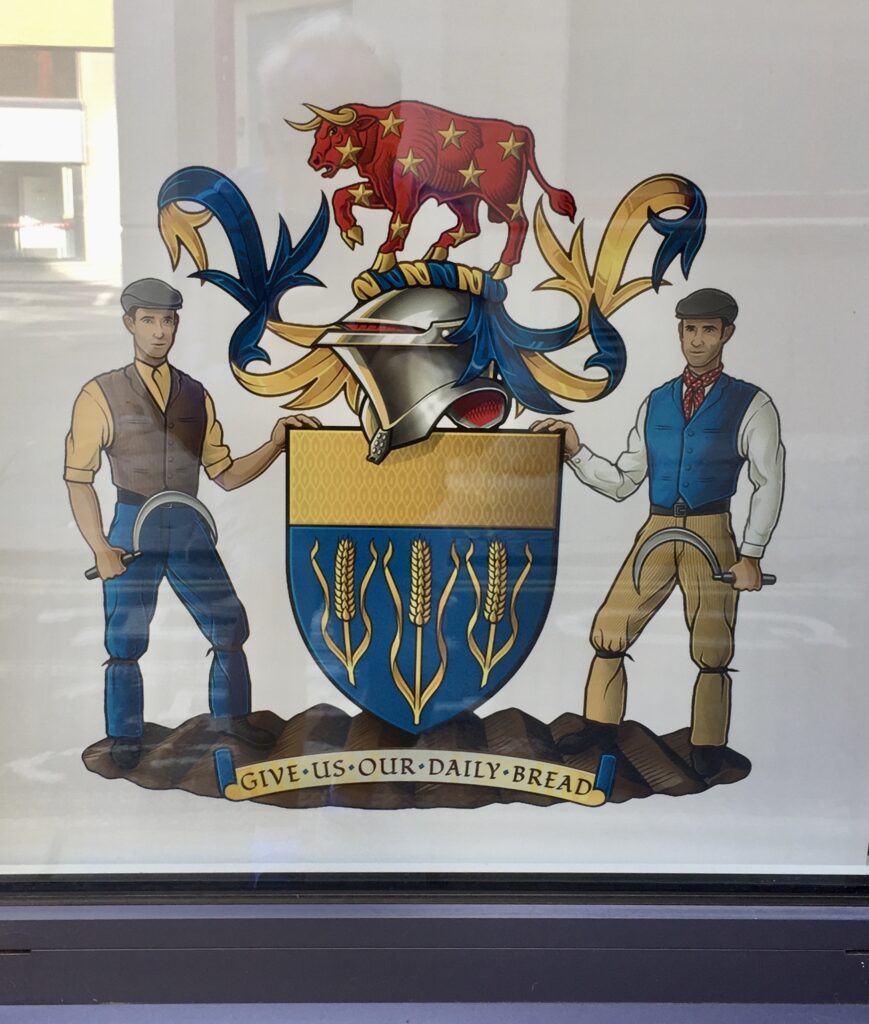
Agriculture can be said to be England’s oldest and most important industry, with the growth of the City dependent on the supply of food to support its growing population for centuries. Whilst evidence suggests some livery companies were active as early as 1155, it is thought farmers were not represented until much later (1946), since they operated outside the square mile, unlike the related trades of Bakers, Butchers, Poulters, Woolmen and Fruiterers.
There is another relatively new company in Bartholomew Close, only granted Livery status in 1992 …
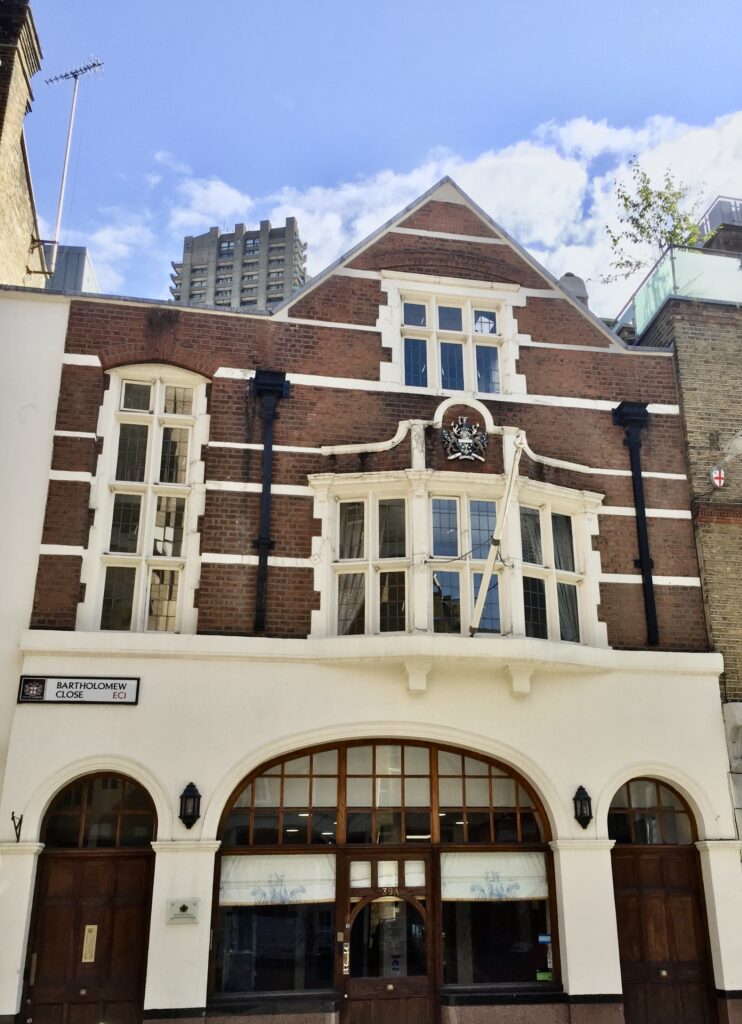

This is its coat of arms which you can read more about here …
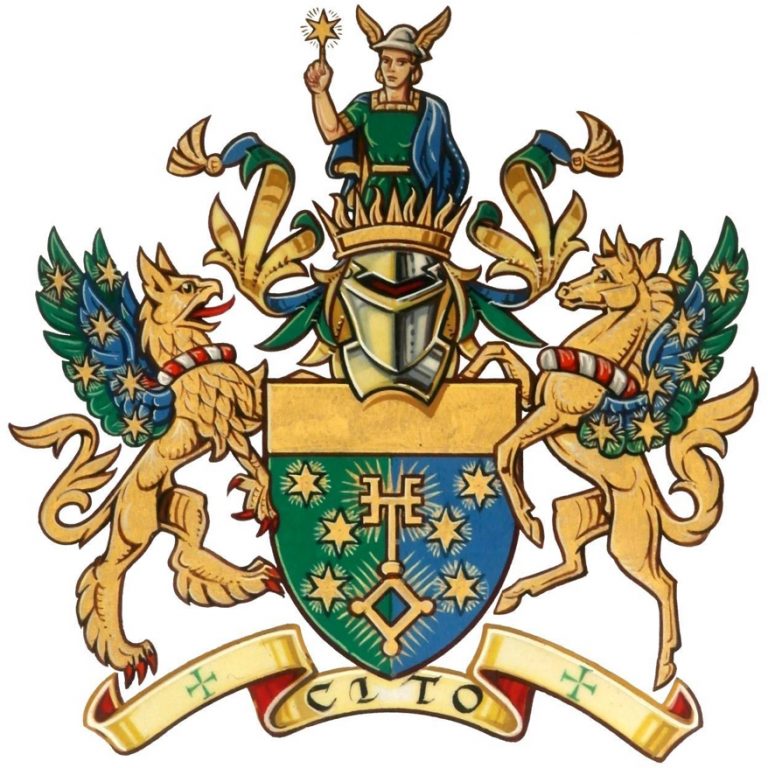
The motto, CITO, means swiftly suggesting the way in which technology speeds the capture, storage and retrieval of knowledge.
A hanging sign on Aldersgate directs you to Ironmongers’ Hall …
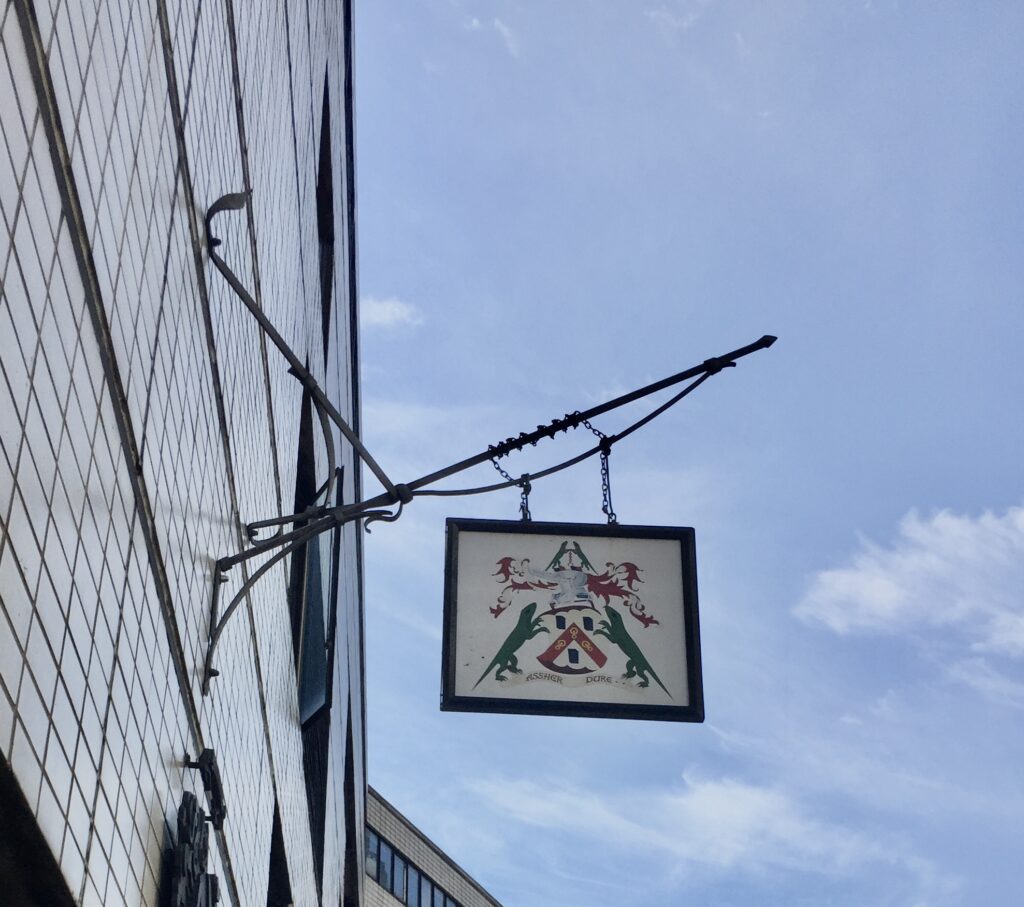
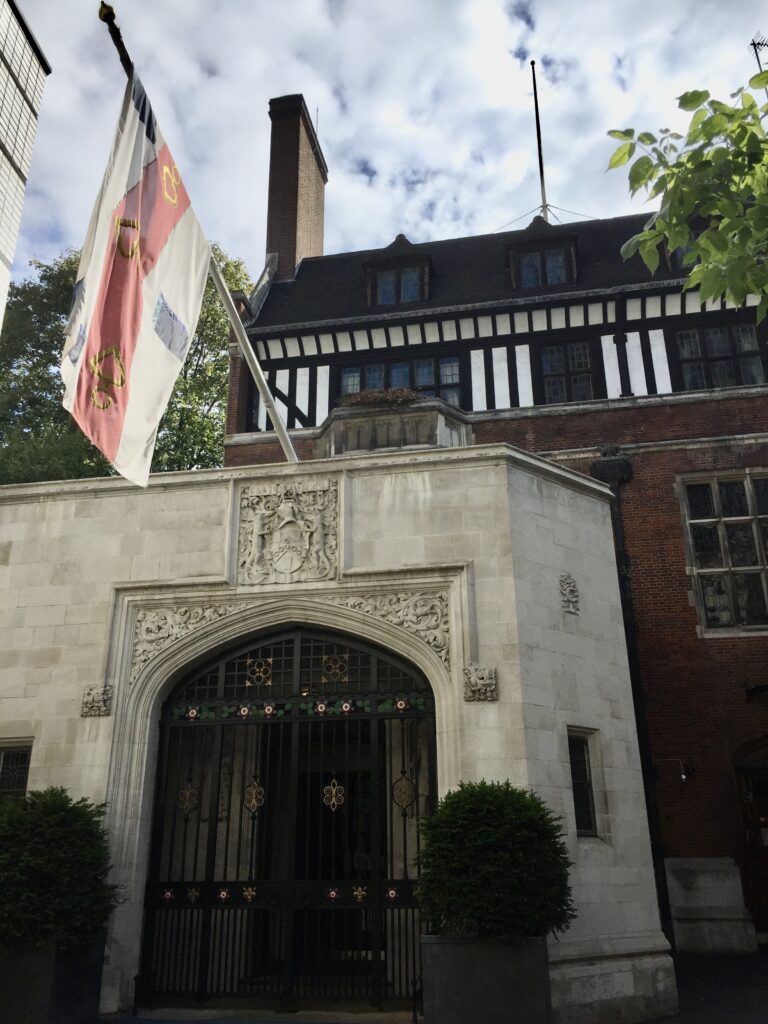
The Ironmongers’ received a grant of arms in 1455, describing them as the ‘Honourable Crafte and Fellasship of Fraunchised Men of Iromongers’, and a charter of incorporation from Edward IV in 1463.
Two salamanders form the crest of the Company’s arms; medieval salamanders reputedly being able to survive fire …
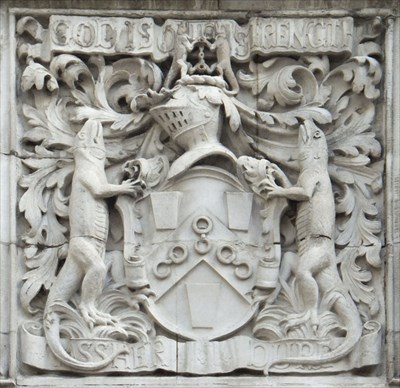
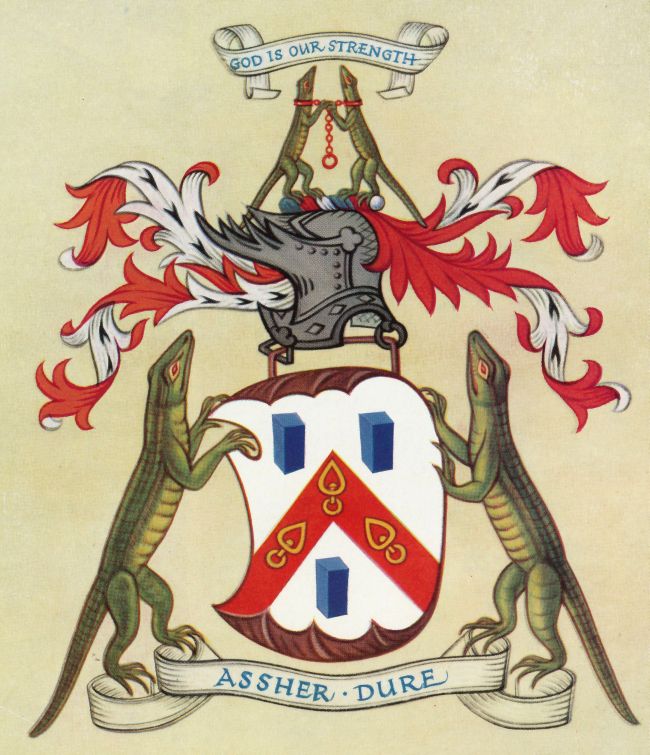
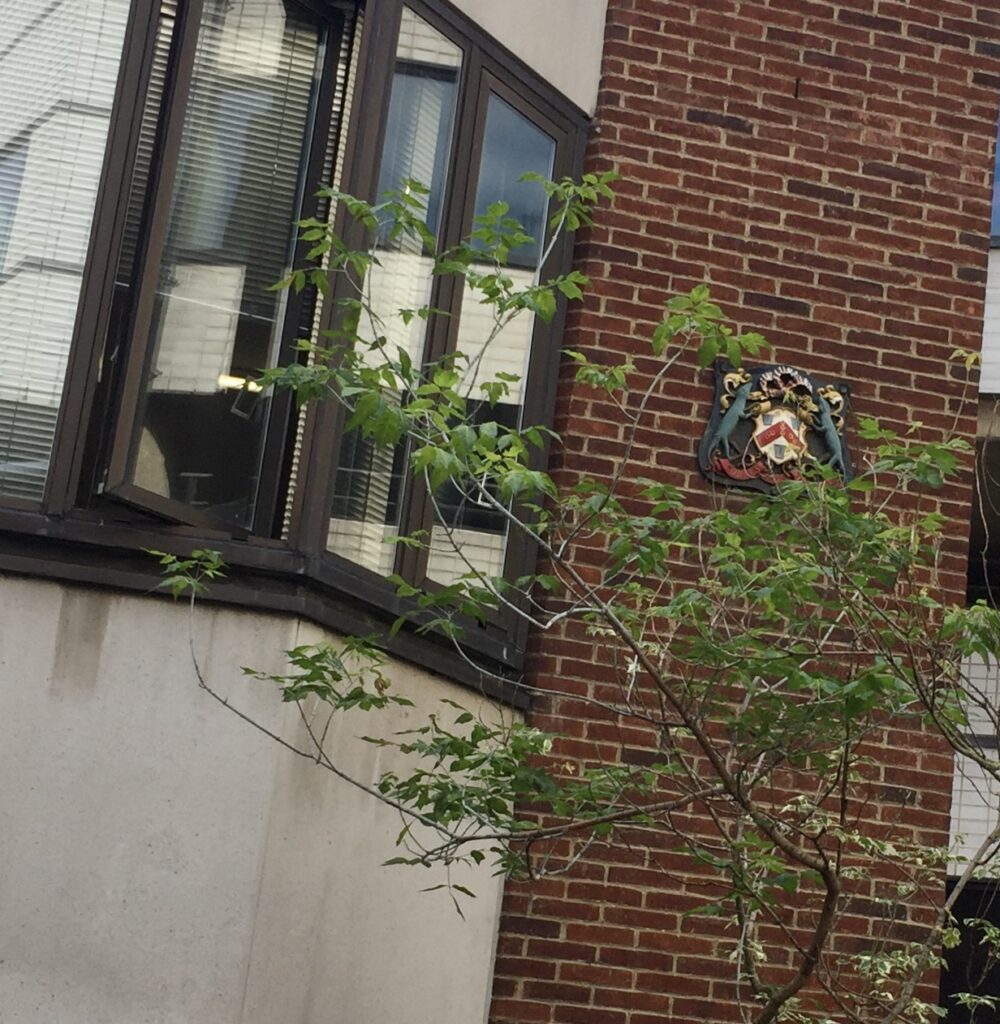
Two saints flank the entrance door …
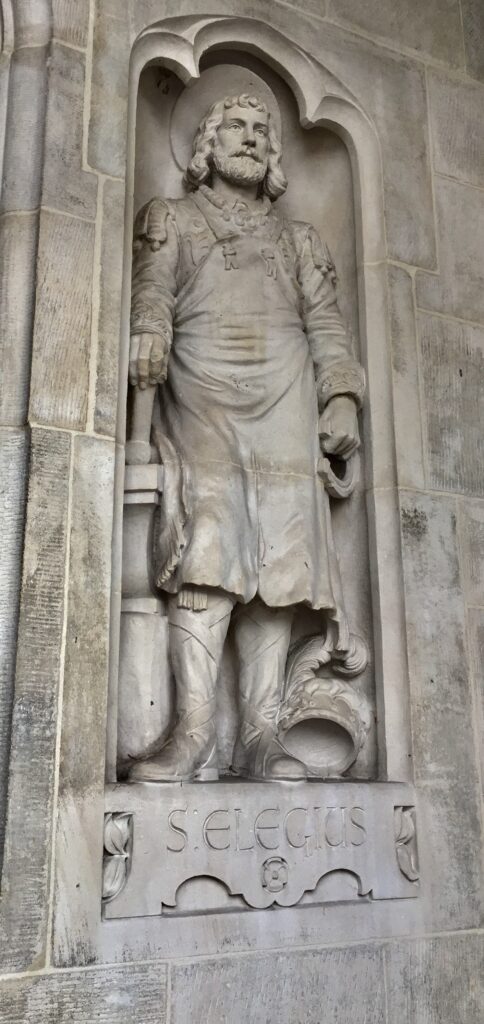
Elegius crafted many gold and silver pieces before taking holy orders in 633. He was made bishop of Noyon and died on 1 December 659. Because of his master craftsmanship and unfailing honesty, he became the patron saint of goldsmiths, blacksmiths and metalworkers.
Opposite him is St Lawrence …
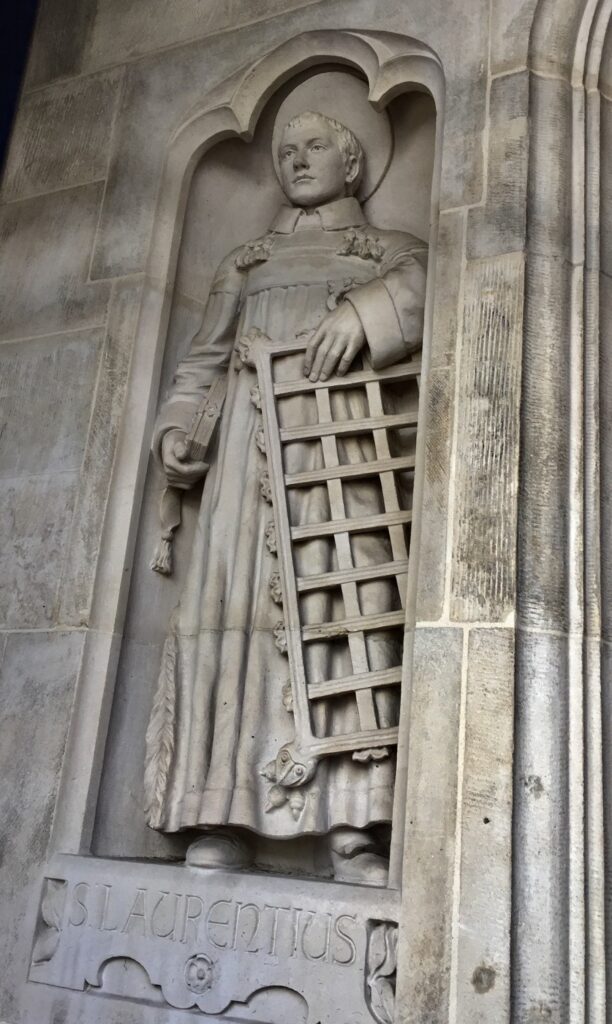
He holds the griddle on which he was roasted to death in 345 AD. Reportedly he joked at one point ‘Look, wretch, you have me well done on one side, turn me over and eat!‘. Quite appropriately, he was adopted as the patron saint of comedians.
A martyr to many was the Scottish hero and patriot Sir William Wallace who was hanged, drawn and quartered in Smithfield in 1315…
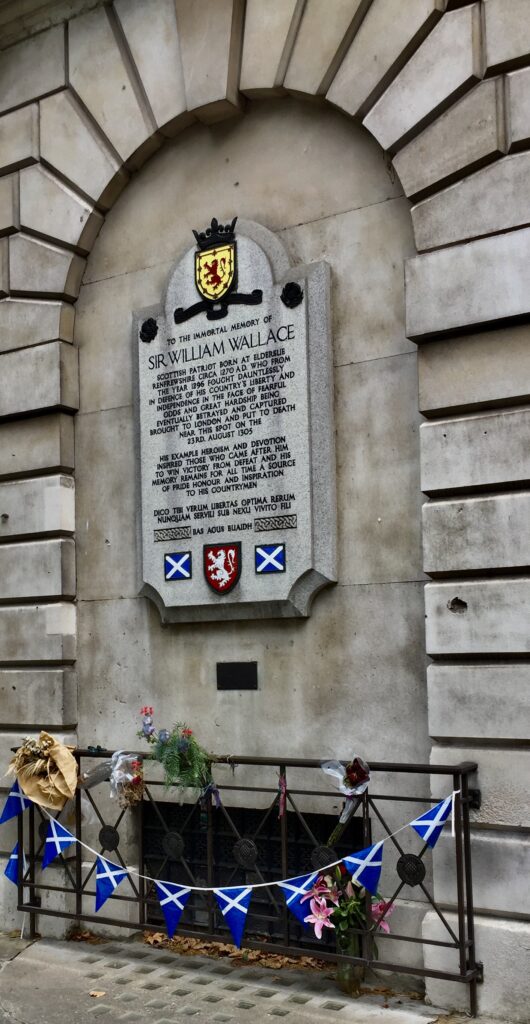
His memorial nearby often shows evidence that he is still remembered and revered to this day …
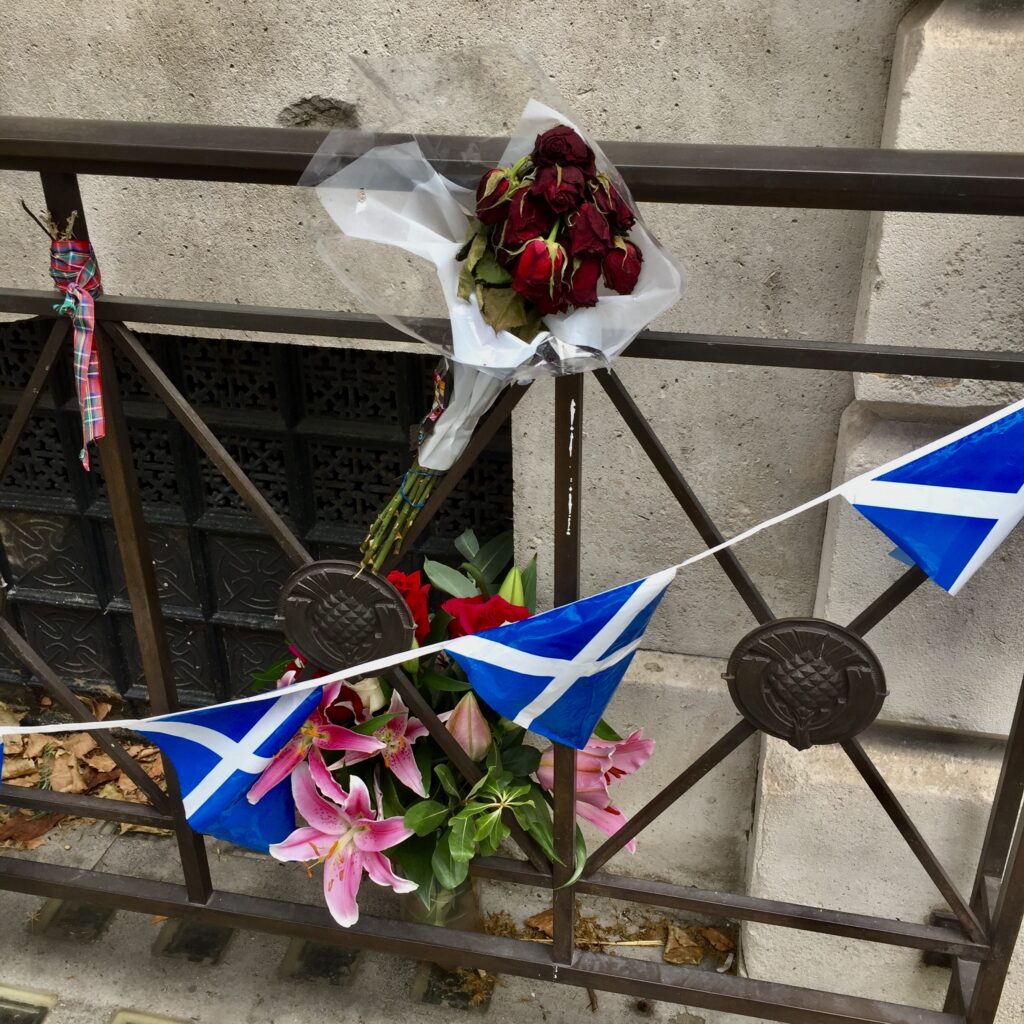
This slate triptych, also in West Smithfield, was unveiled by Ken Loach in July 2015 and commemorates the Great Rising of 1381 (more commonly known as the Peasants’ Revolt) …
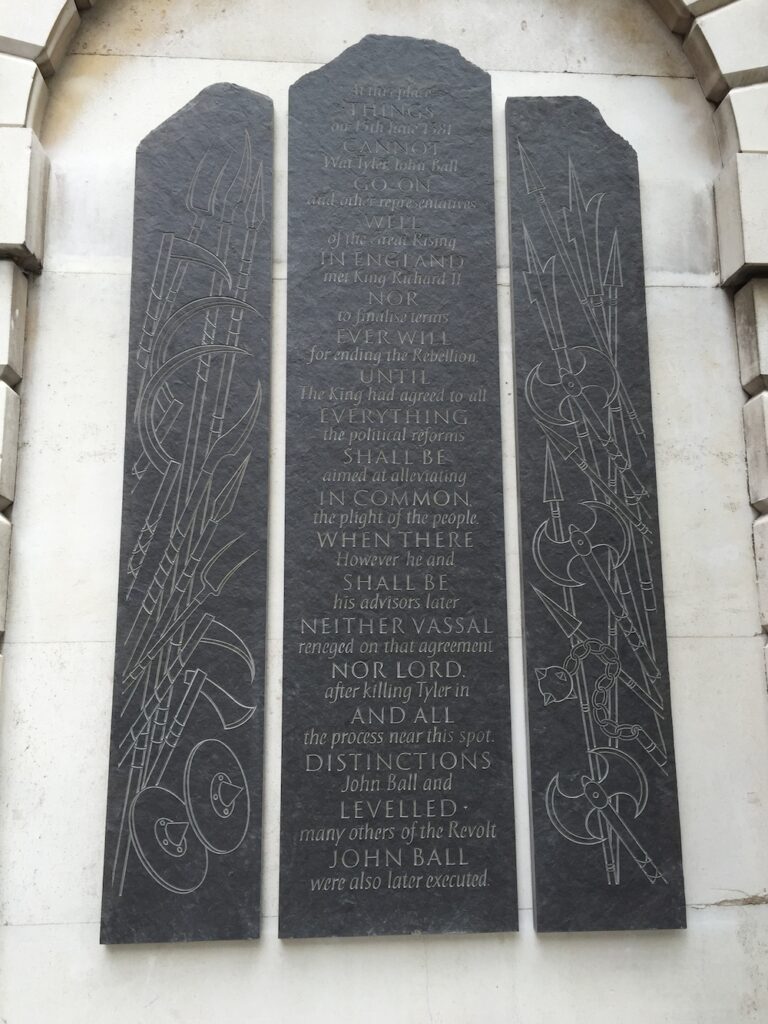
The Revolt was led by Wat Tyler and on June 15th 1381 he had the opportunity to speak directly to the 14-year-old king, Richard II. Accompanying the King was the Lord Mayor of London William Walworth and, for reasons that are not entirely clear, Walworth ran Tyler through with his sword. Badly wounded, Tyler was carried into nearby St Bartholomew’s Hospital but, rather unsportingly, Walworth had him dragged out and decapitated. Poll Tax protesters were dealt with very ruthlessly in those days!
Of the 288 people estimated to have been burnt for heresy during the five year reign of Mary Tudor, forty eight were killed in Smithfield. ‘Bloody Mary’ was the daughter of Henry VIII and Katherine of Aragon and the burnings were part of her campaign to reverse the English Reformation.
The ‘Marian Martyrs’ are commemorated with this plaque erected by the Protestant Alliance in 1870 …
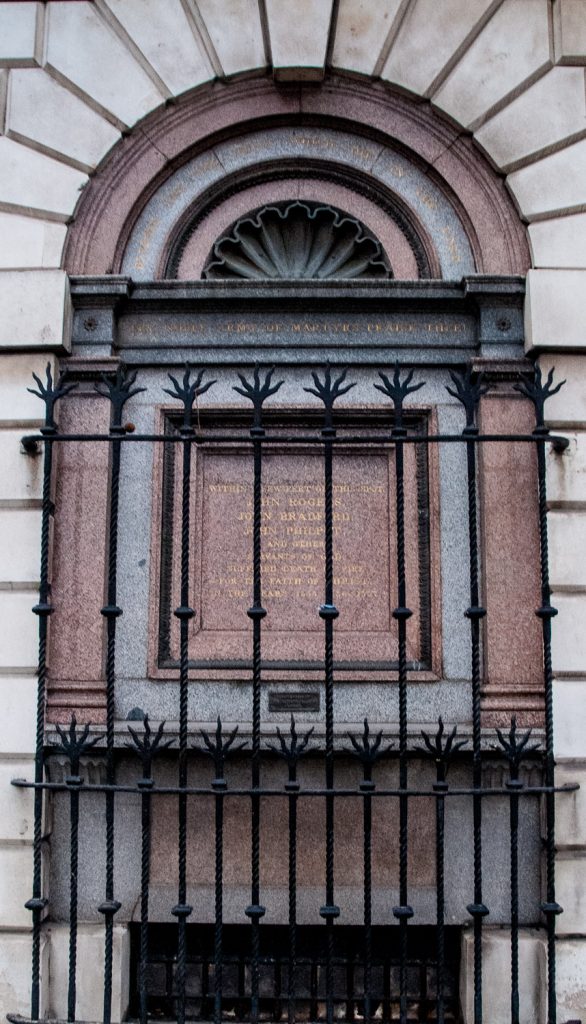
The gilding is a little faded in this picture. It reads …
Blessed are the dead which die in the Lord. The noble army of martyrs praise Thee! Within a few feet of this spot,
John Rogers,
John Bradford,
John Philpot,
and other servants of God, suffered death by fire for the faith of Christ, in the years 1555, 1556, 1557
One terrible occasion was on 16 July 1546 when Anne Askew was burnt at the stake along with John Lascelles (a lawyer and Gentleman of the King’s Privy Chamber), John Hadlam (a tailor from Essex) and John Hemsley (a former Franciscan friar). A great stage was built at Smithfield for the convenience of Chancellor Wriothesley, other members of the Privy Council and City dignitaries, to watch the burning in comfort …
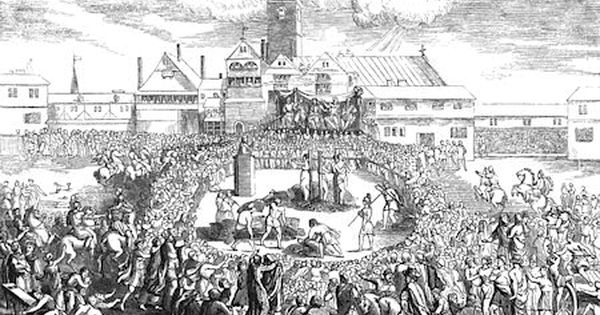
Anne herself, having been illegally broken on the rack, was unable to stand, and was chained to the stake in a sitting position. You can read more about this fascinating, brave lady here.
Every burning was different; if the fire ‘caught’, it could be over relatively quickly, but on damp days, or when the wind persisted in blowing the flames away from the body, it could take up to an hour for the condemned person to die, an hour of excruciating agony.
The area is now being transformed by new residential developments along with the conversion of many old commercial premises into apartments.
I’m fascinated by some of the old buildings’ textures and features and will write more about this in future weeks …
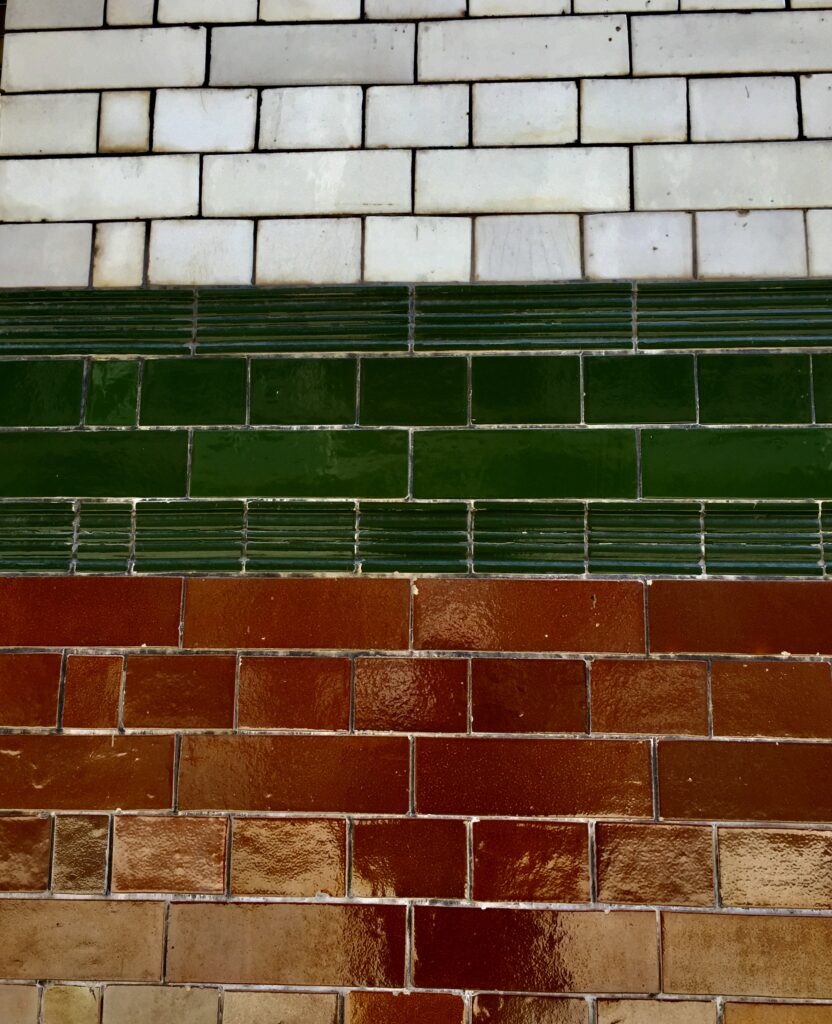
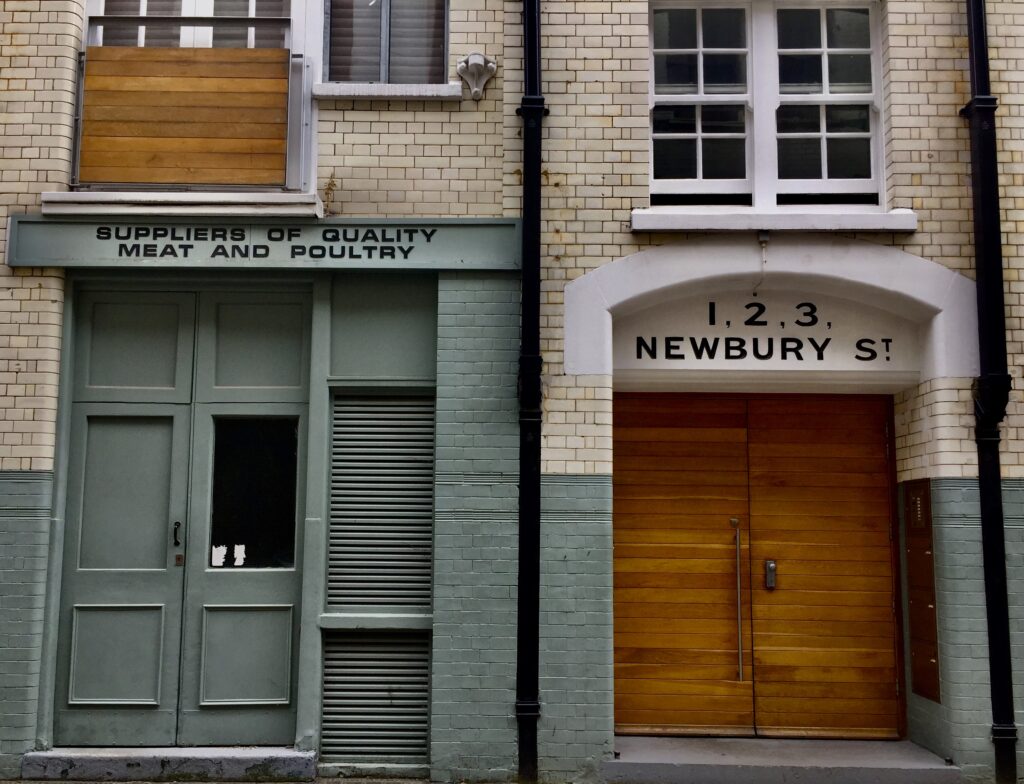
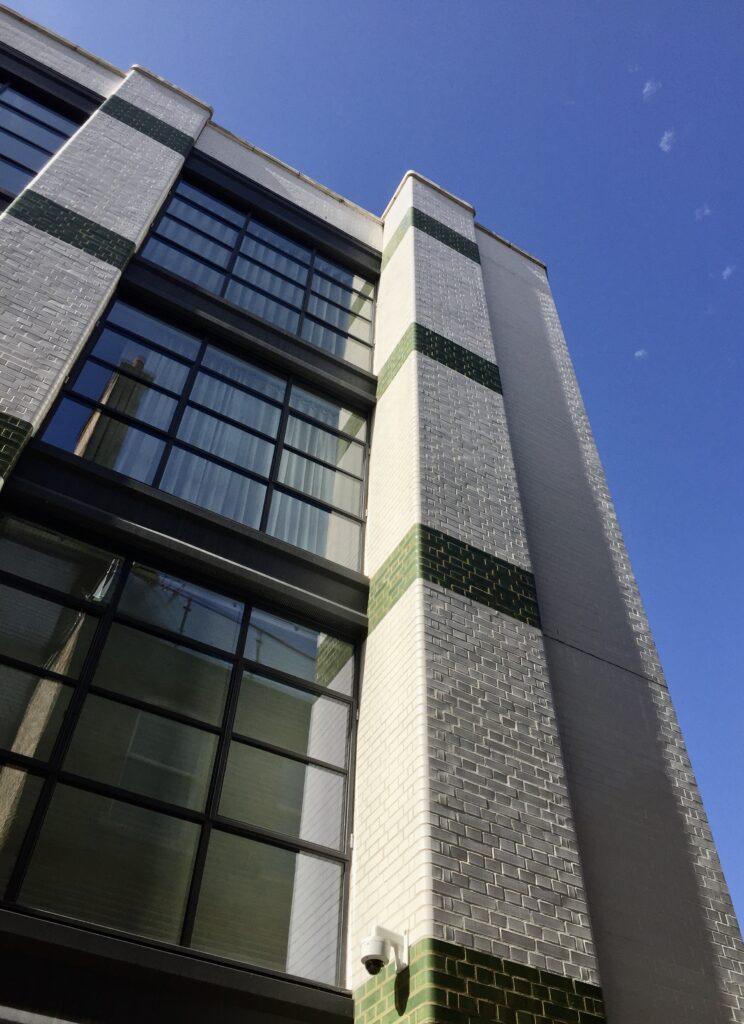
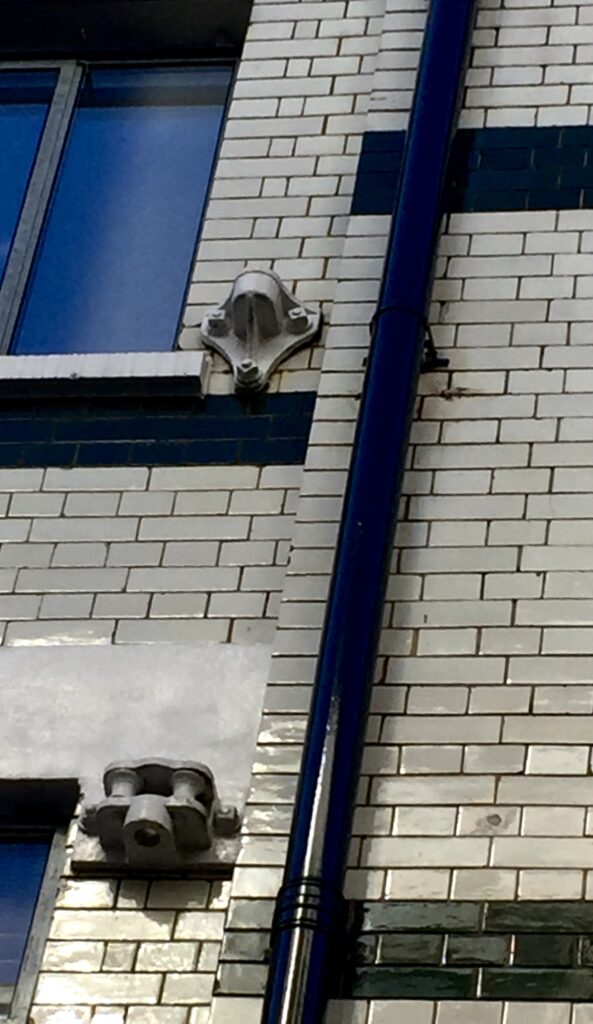
If you would like to follow me on Instagram here is the link …
https://www.instagram.com/london_city_gent/
.
